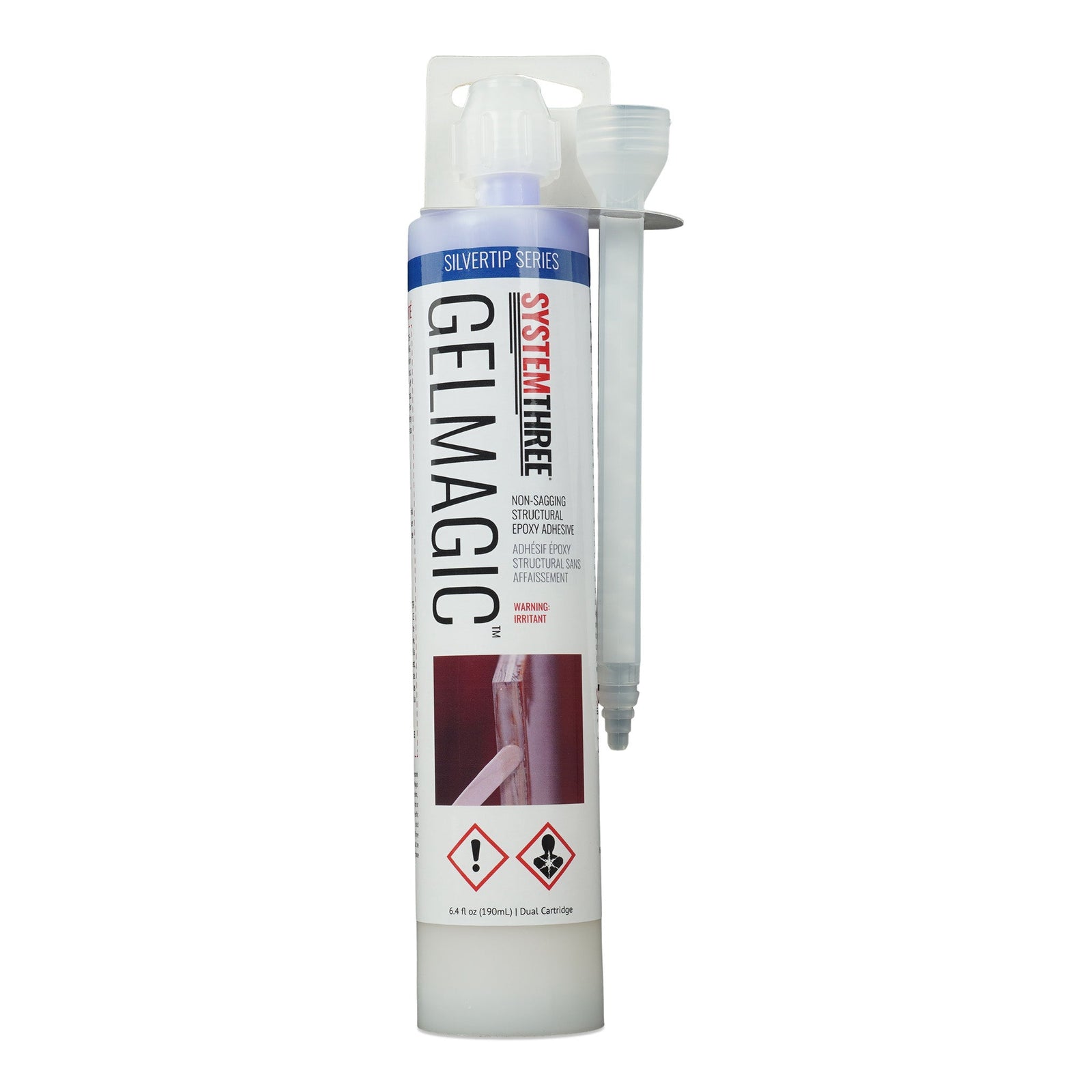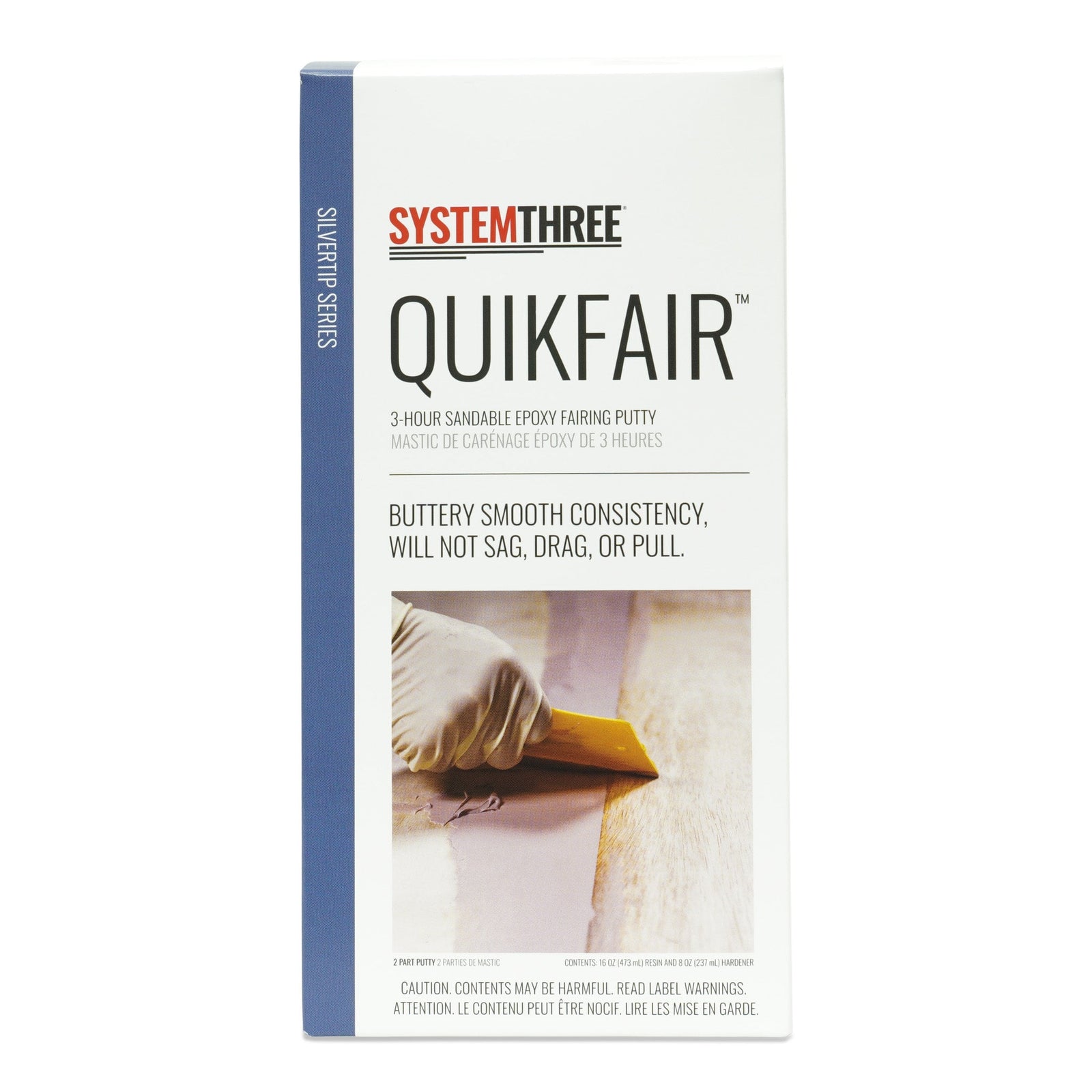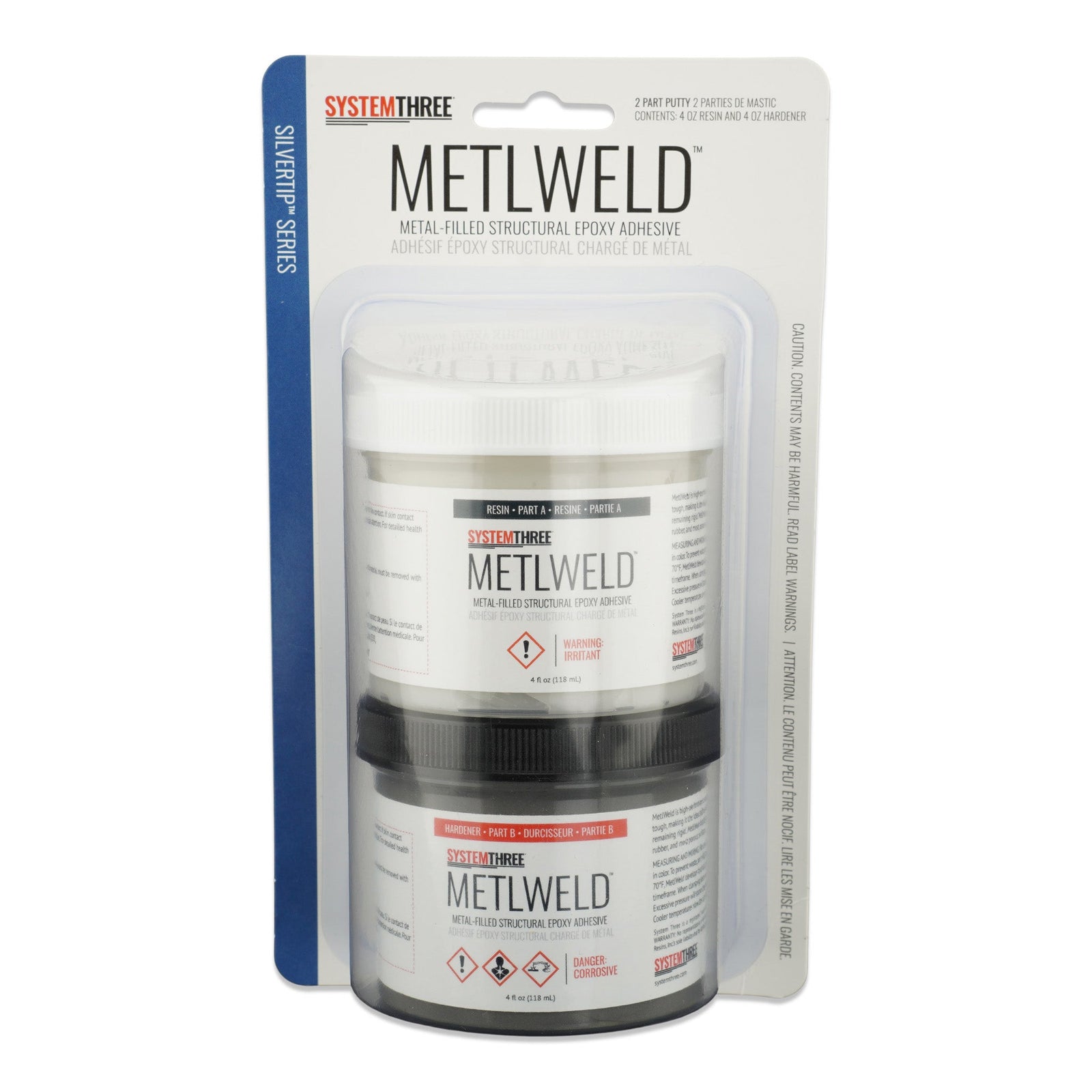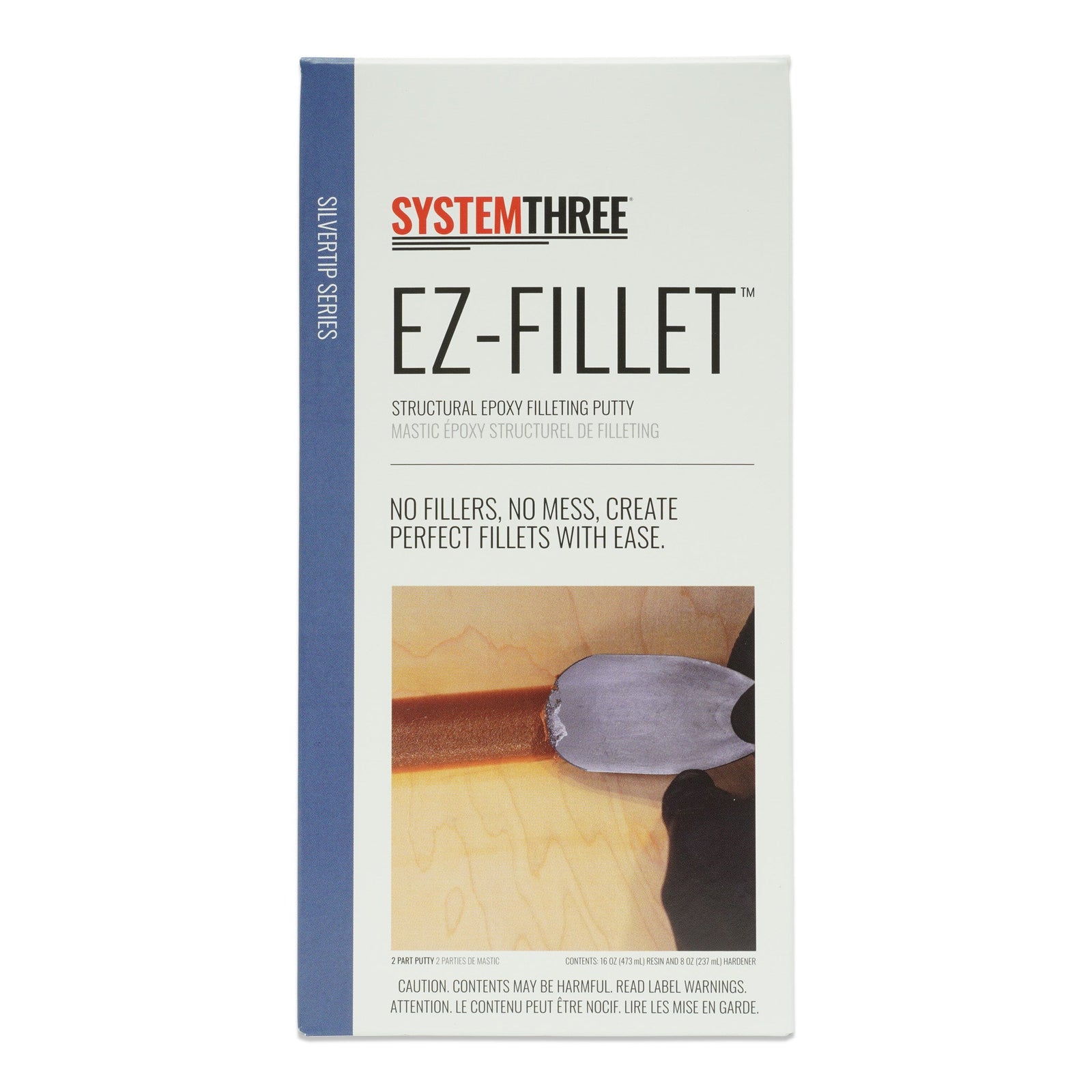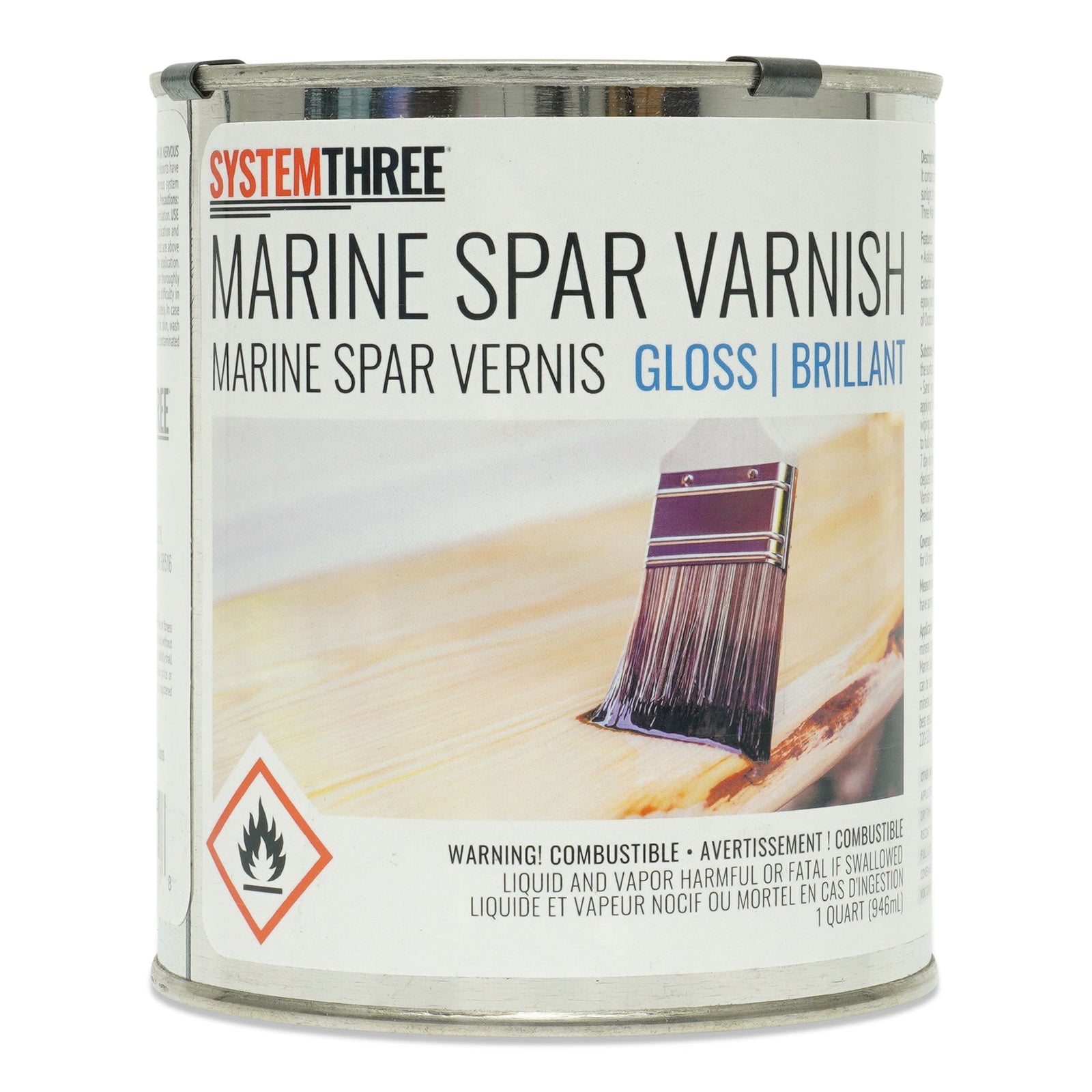

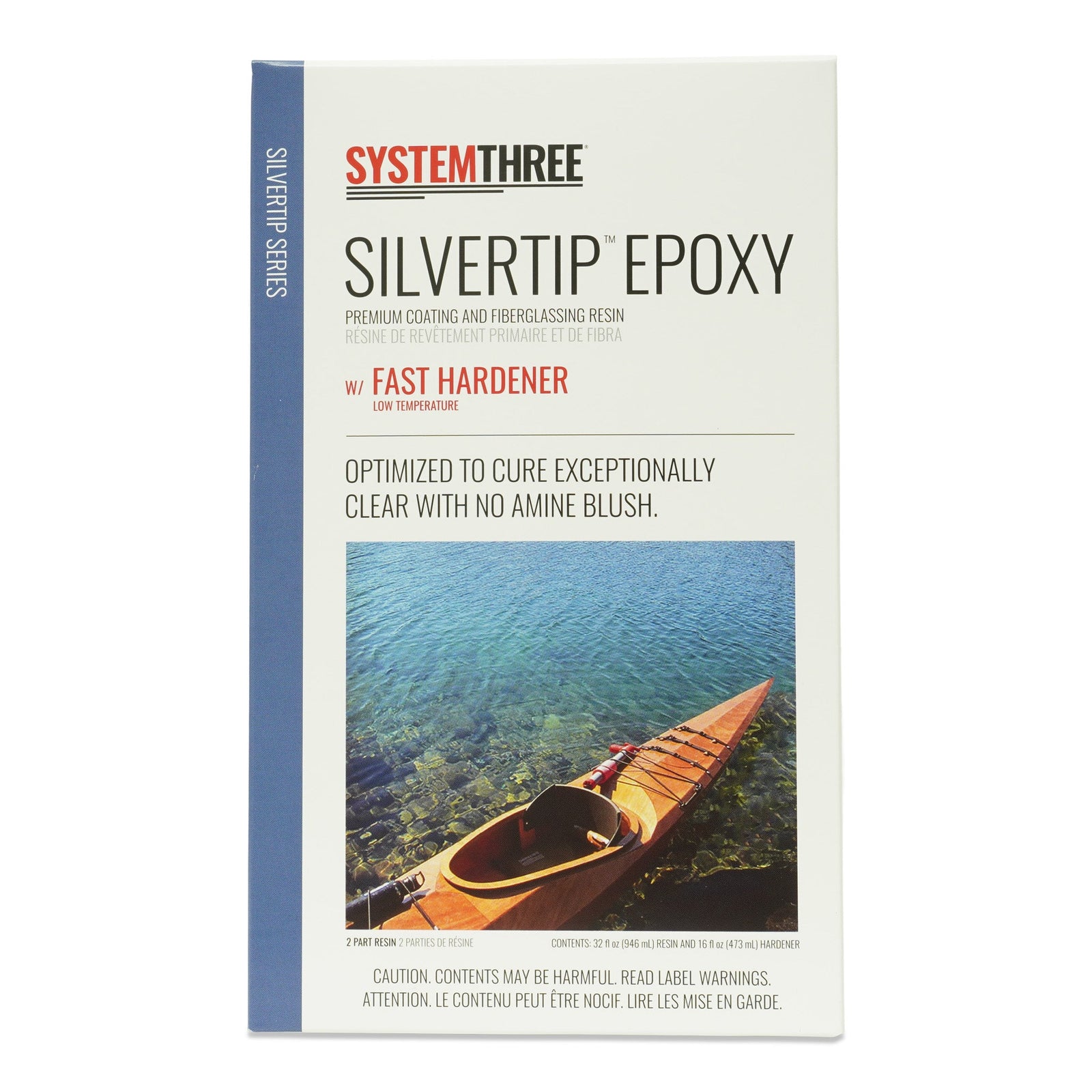
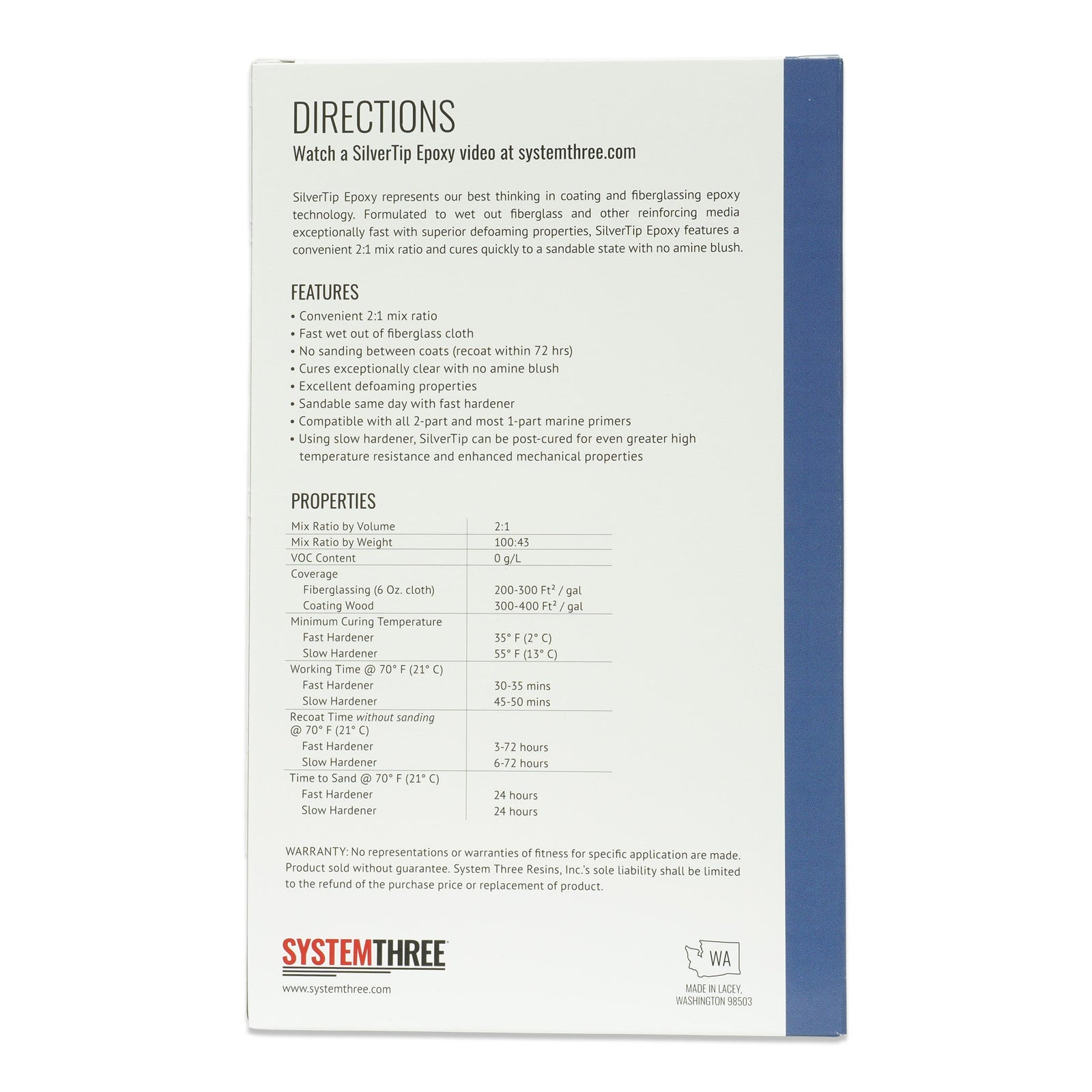
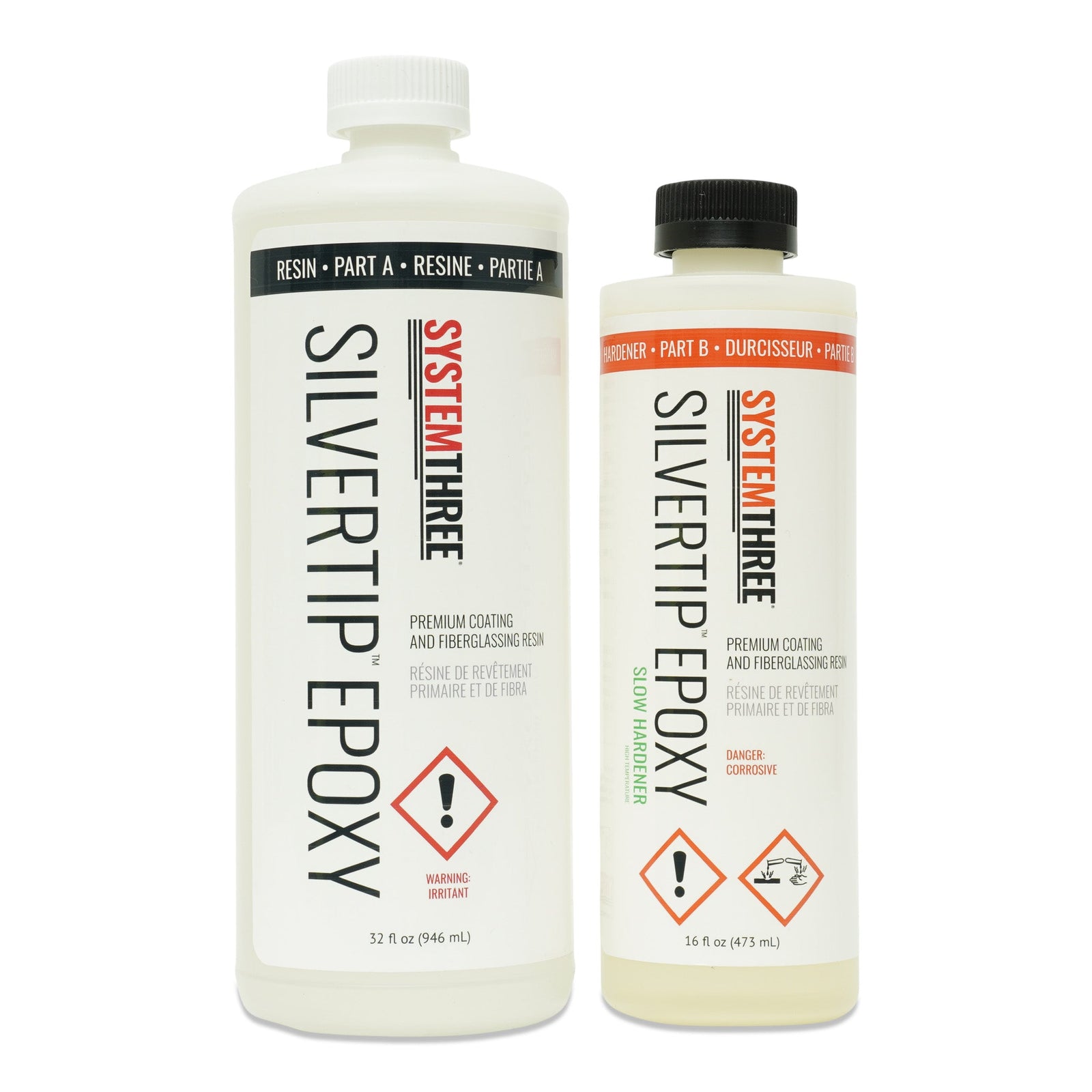
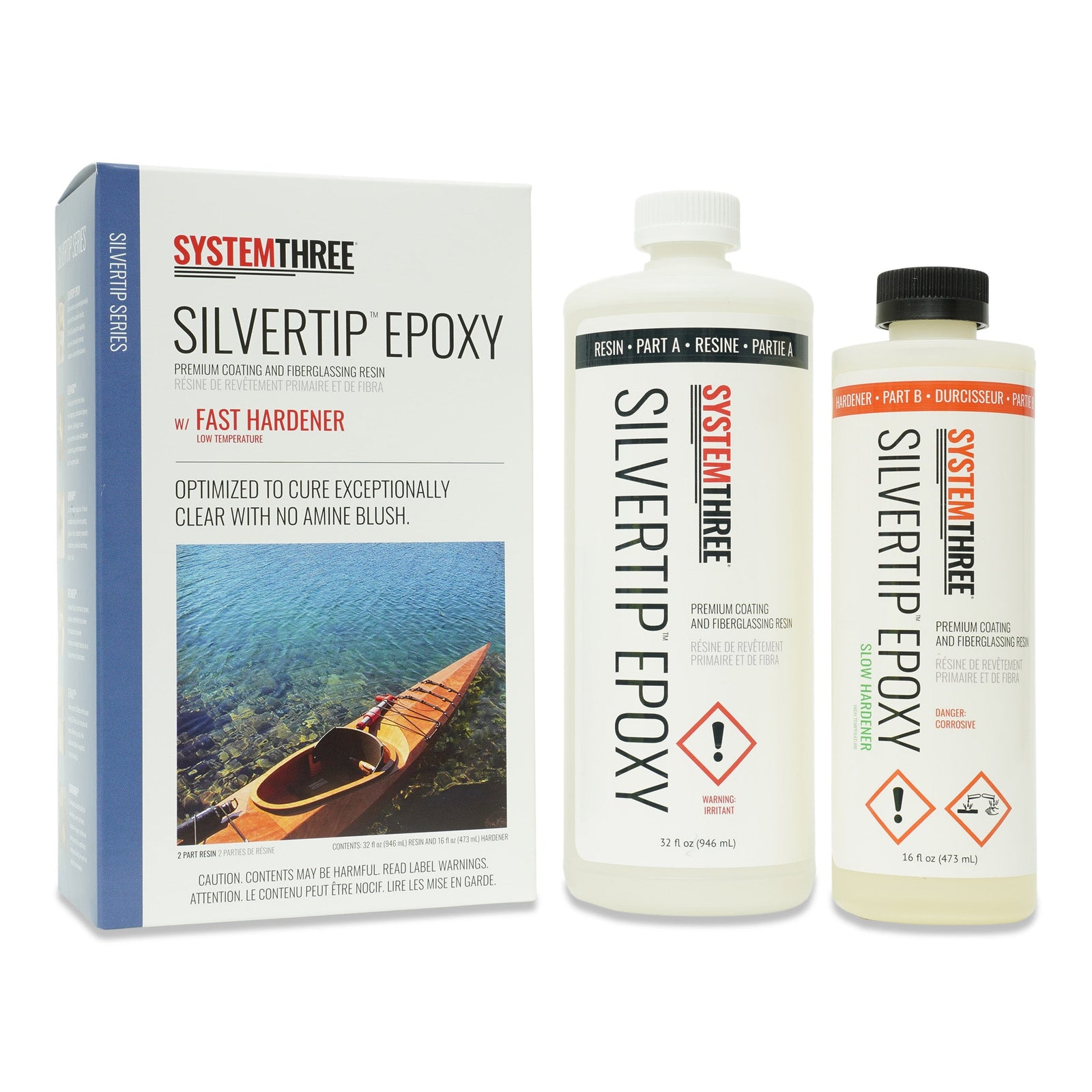
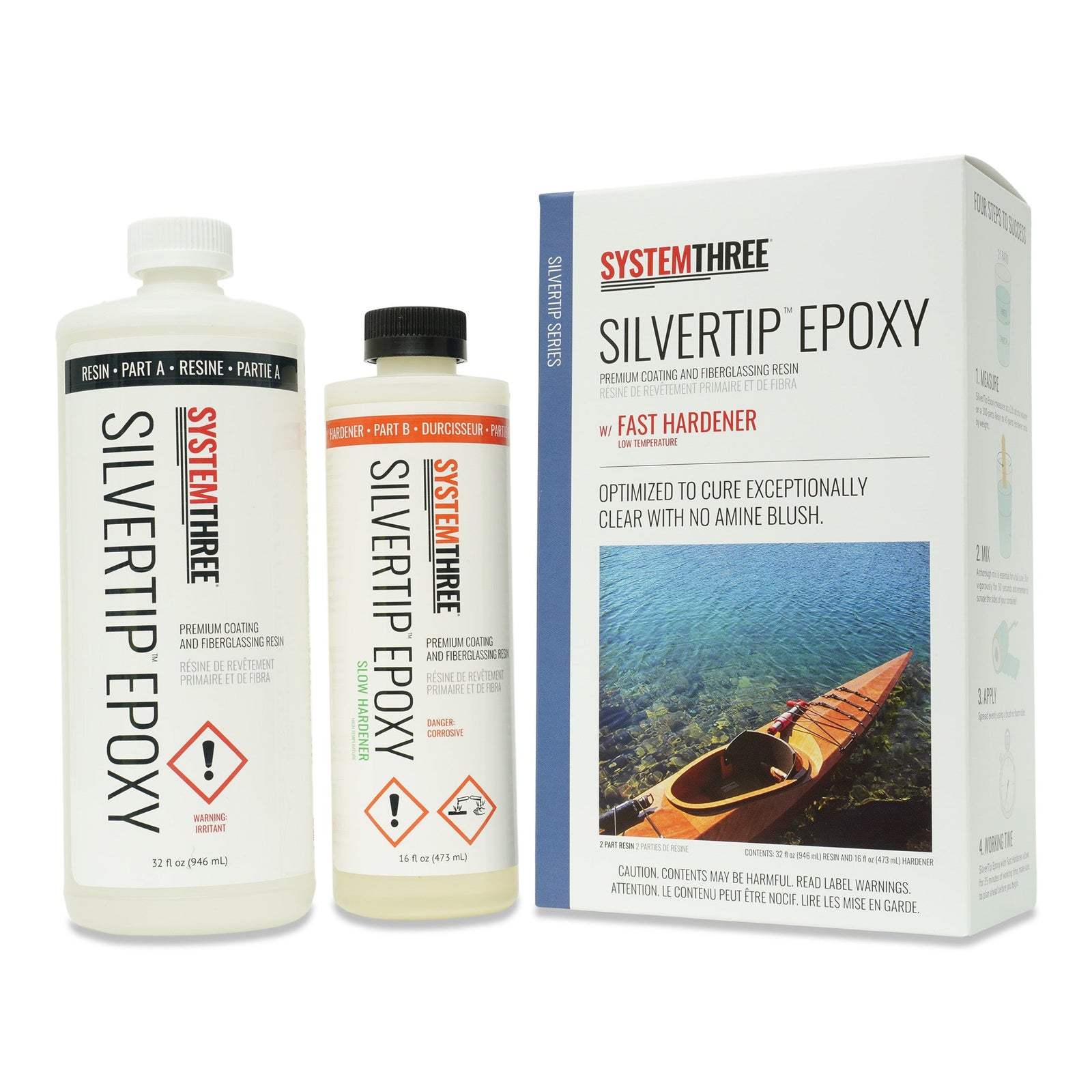
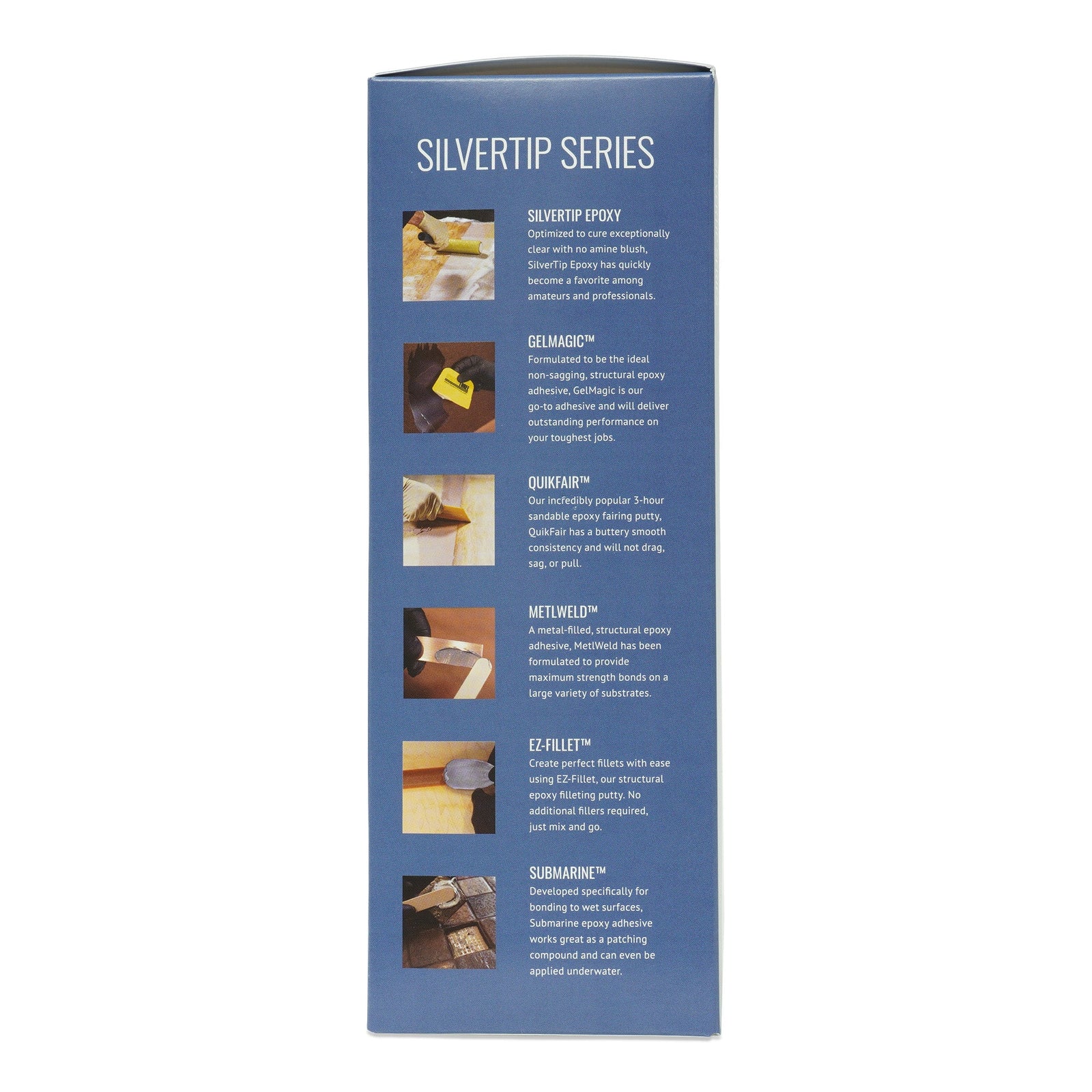
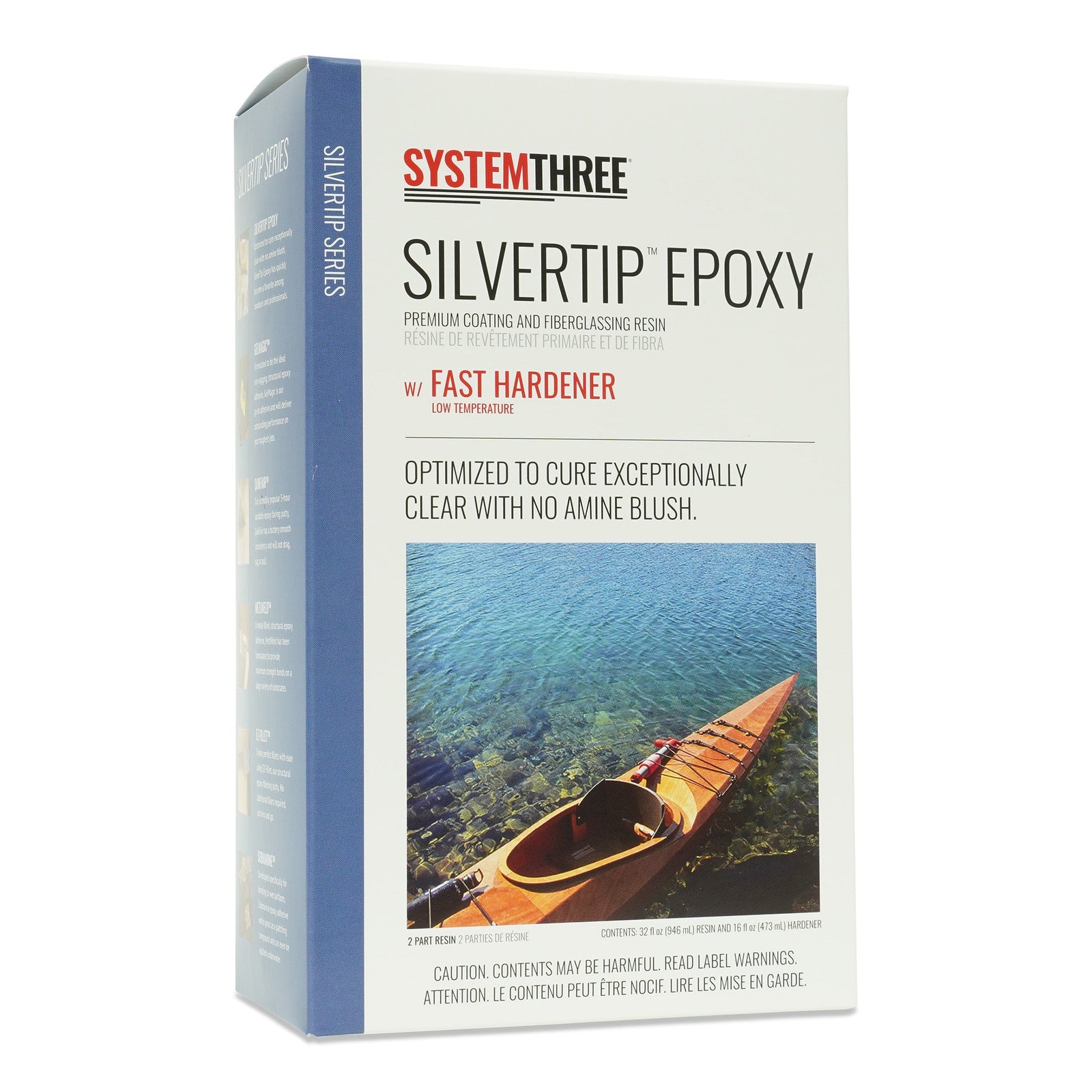
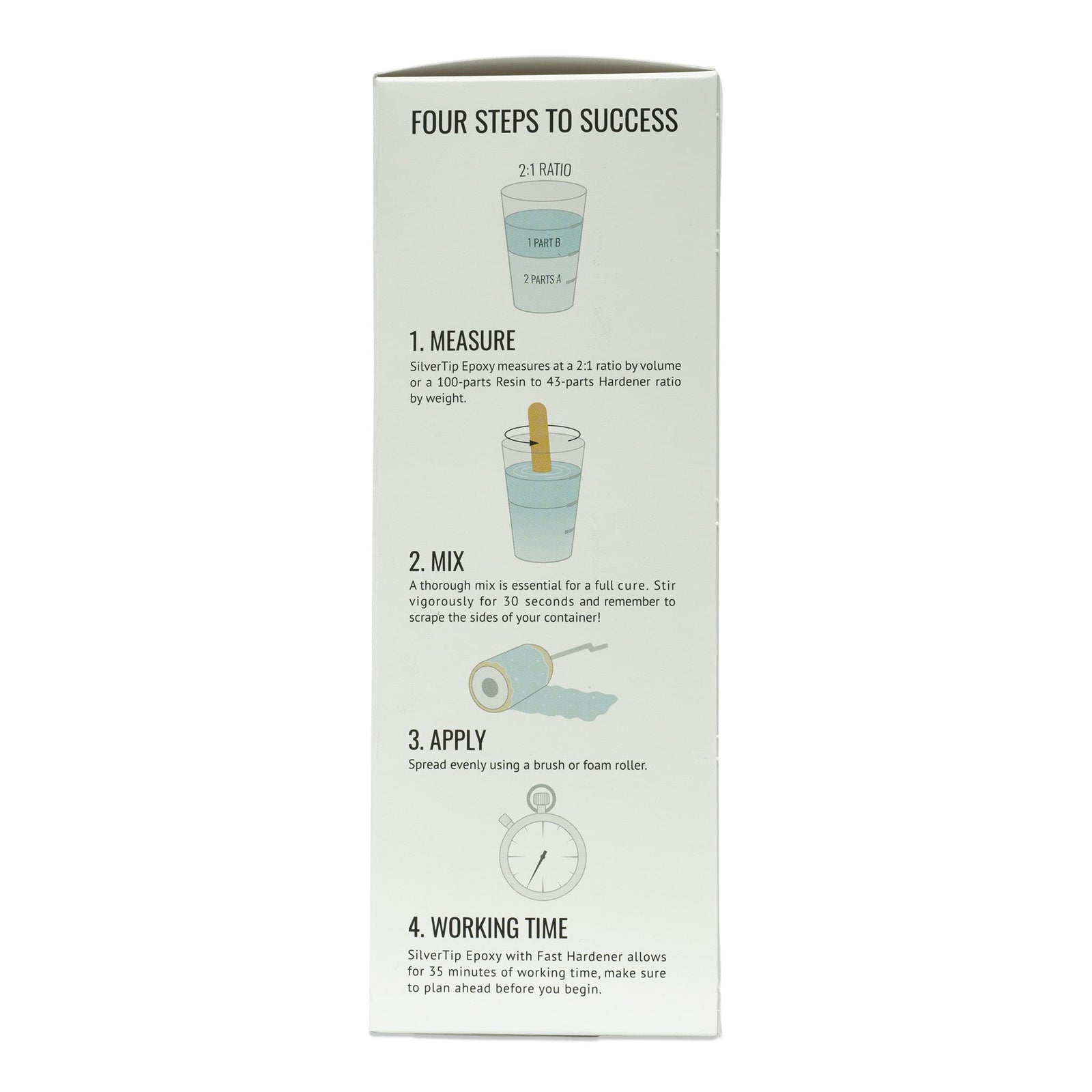
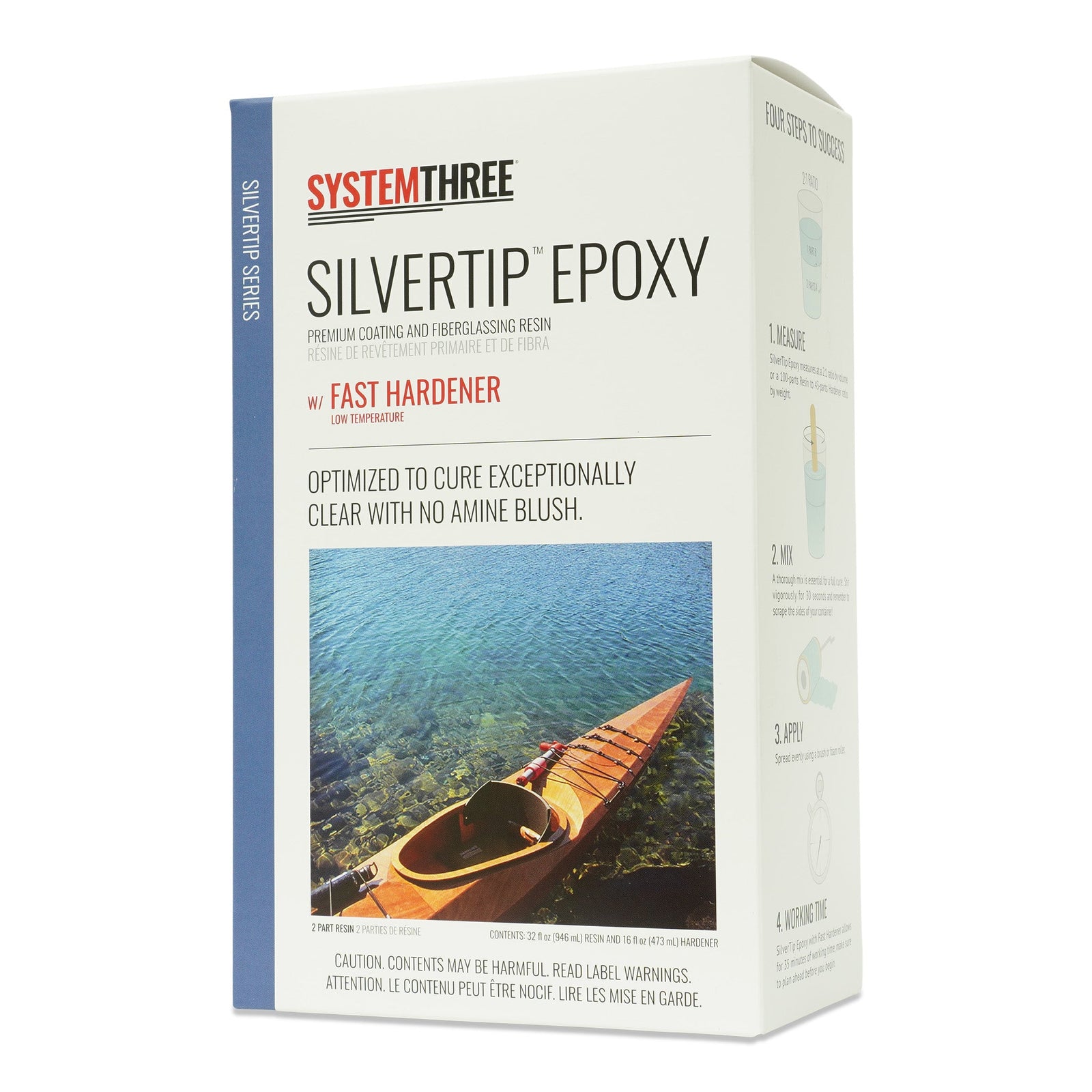
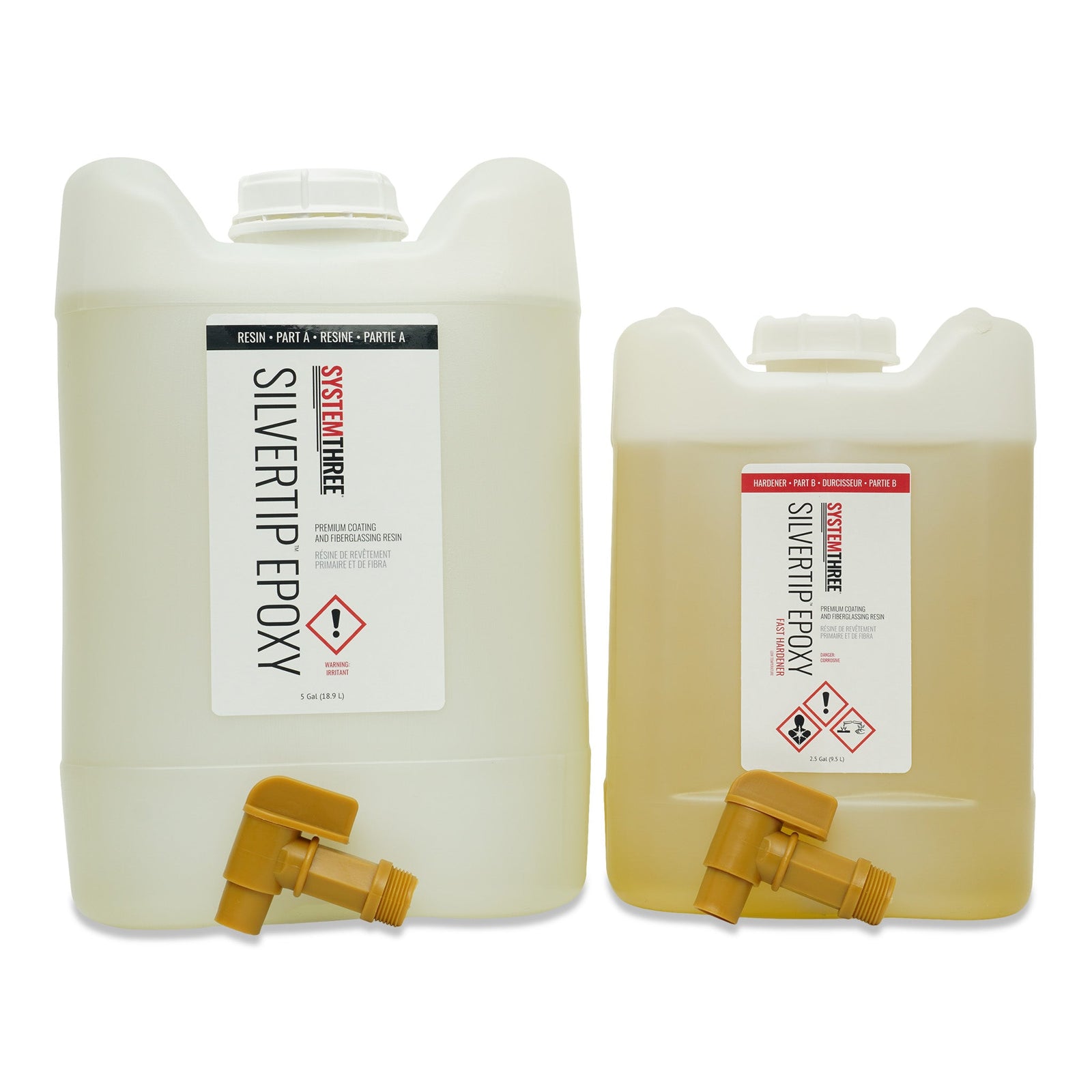
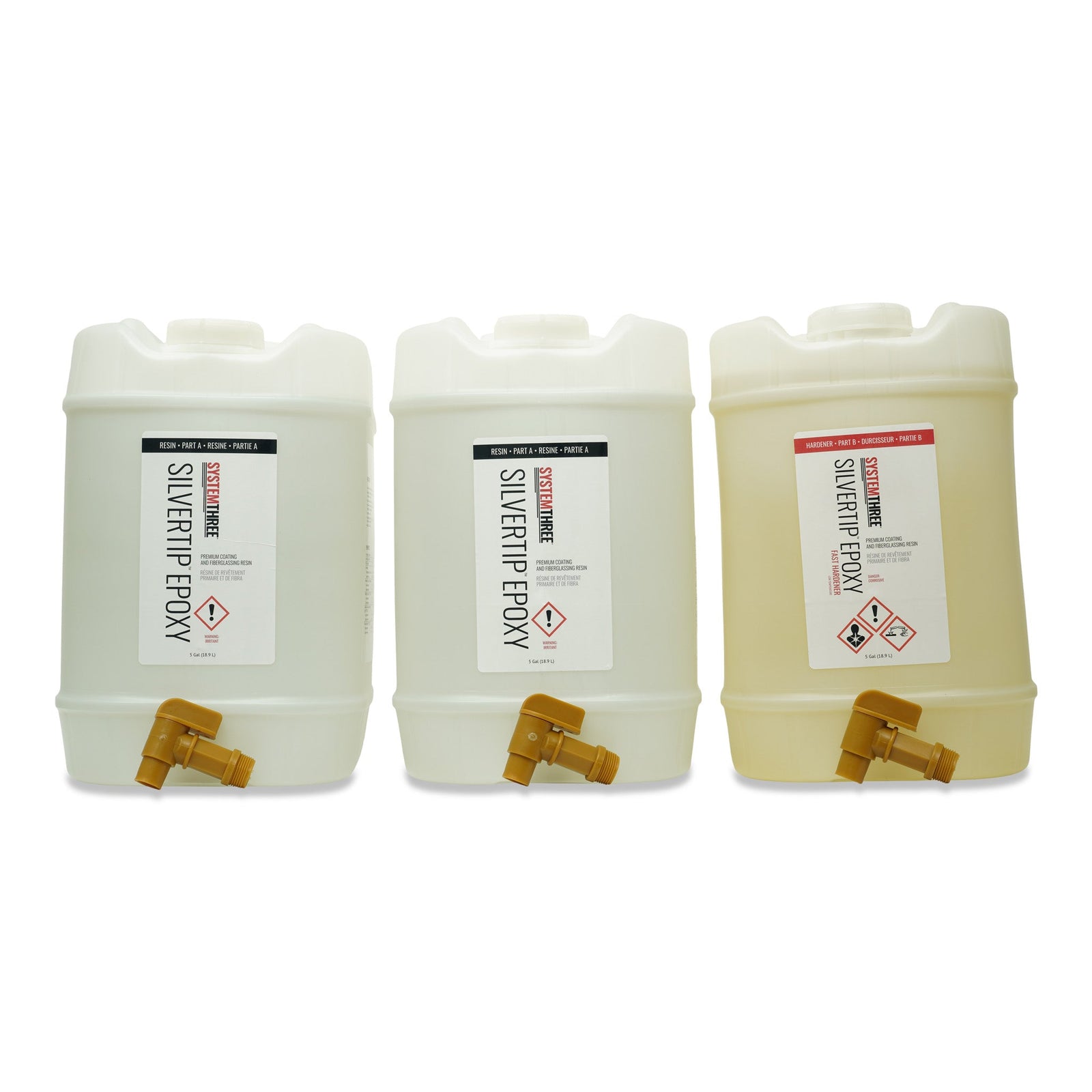
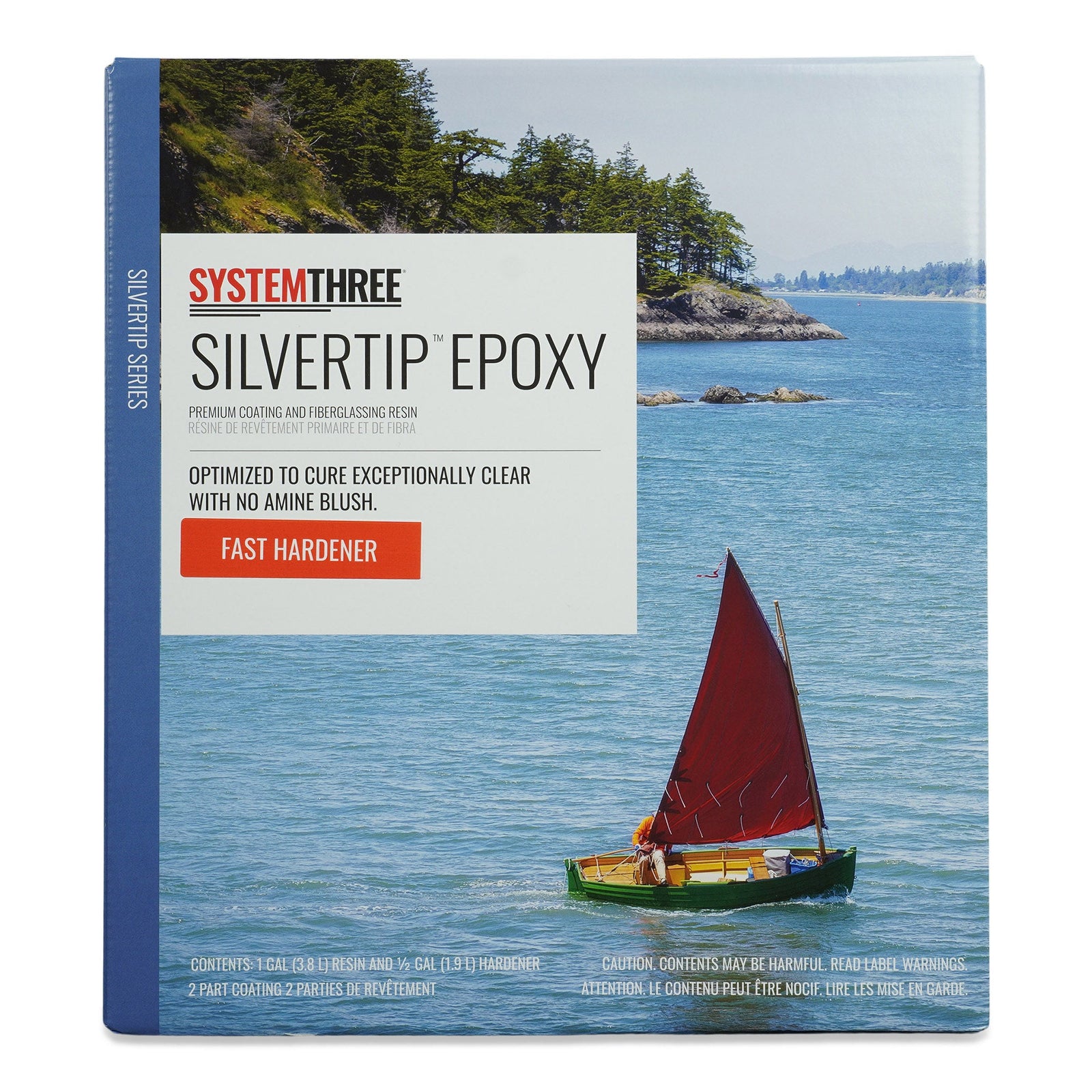
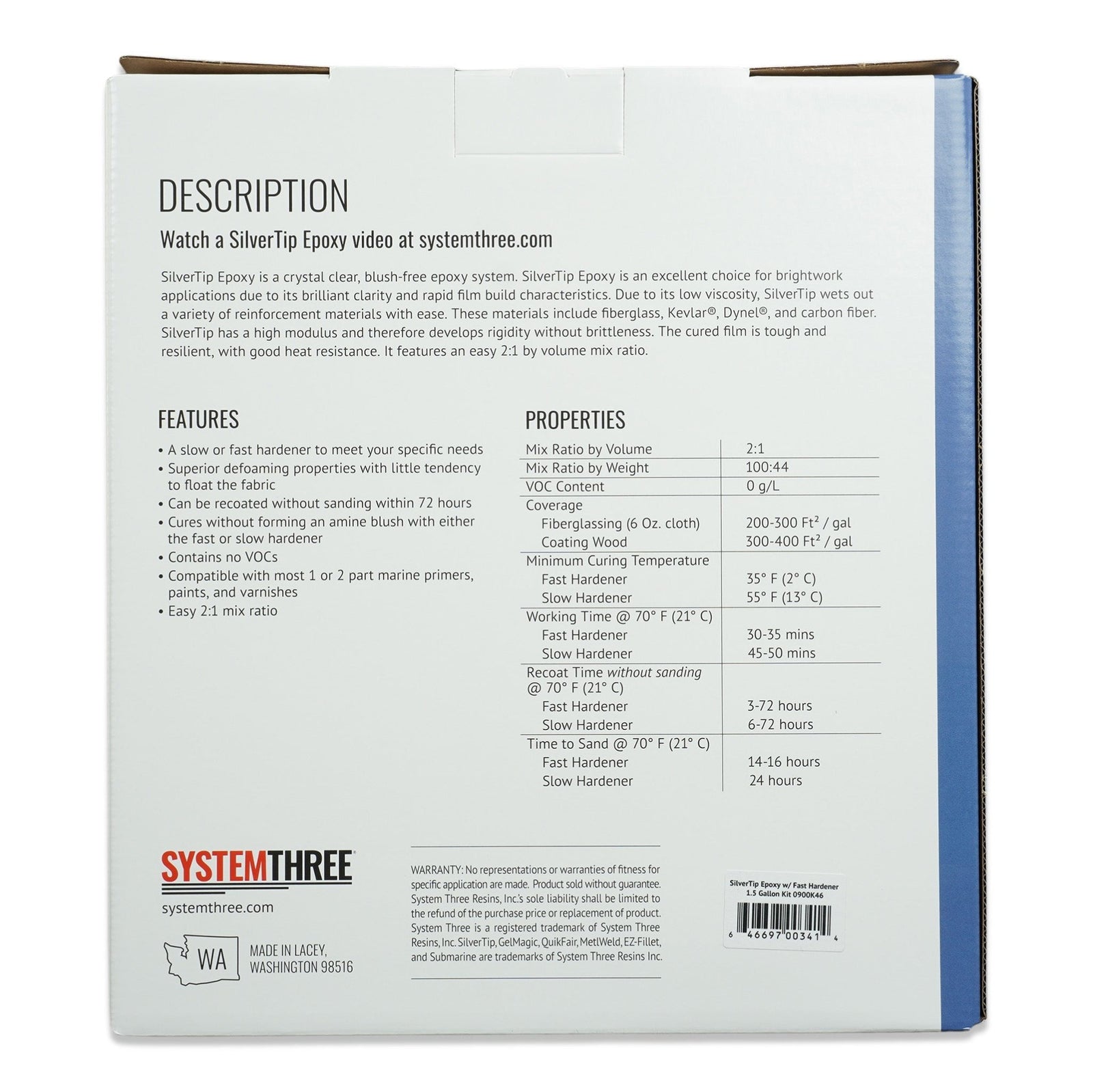
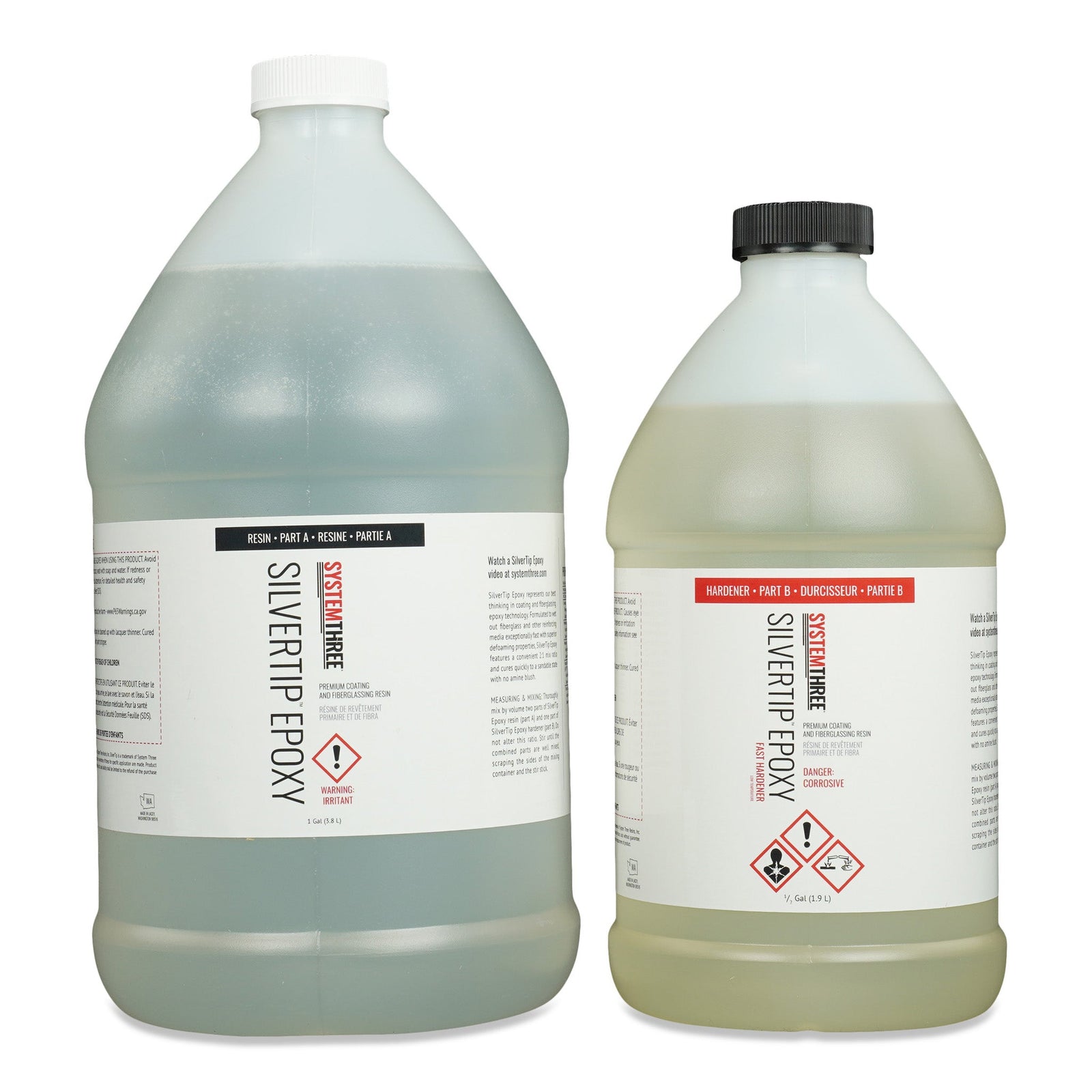
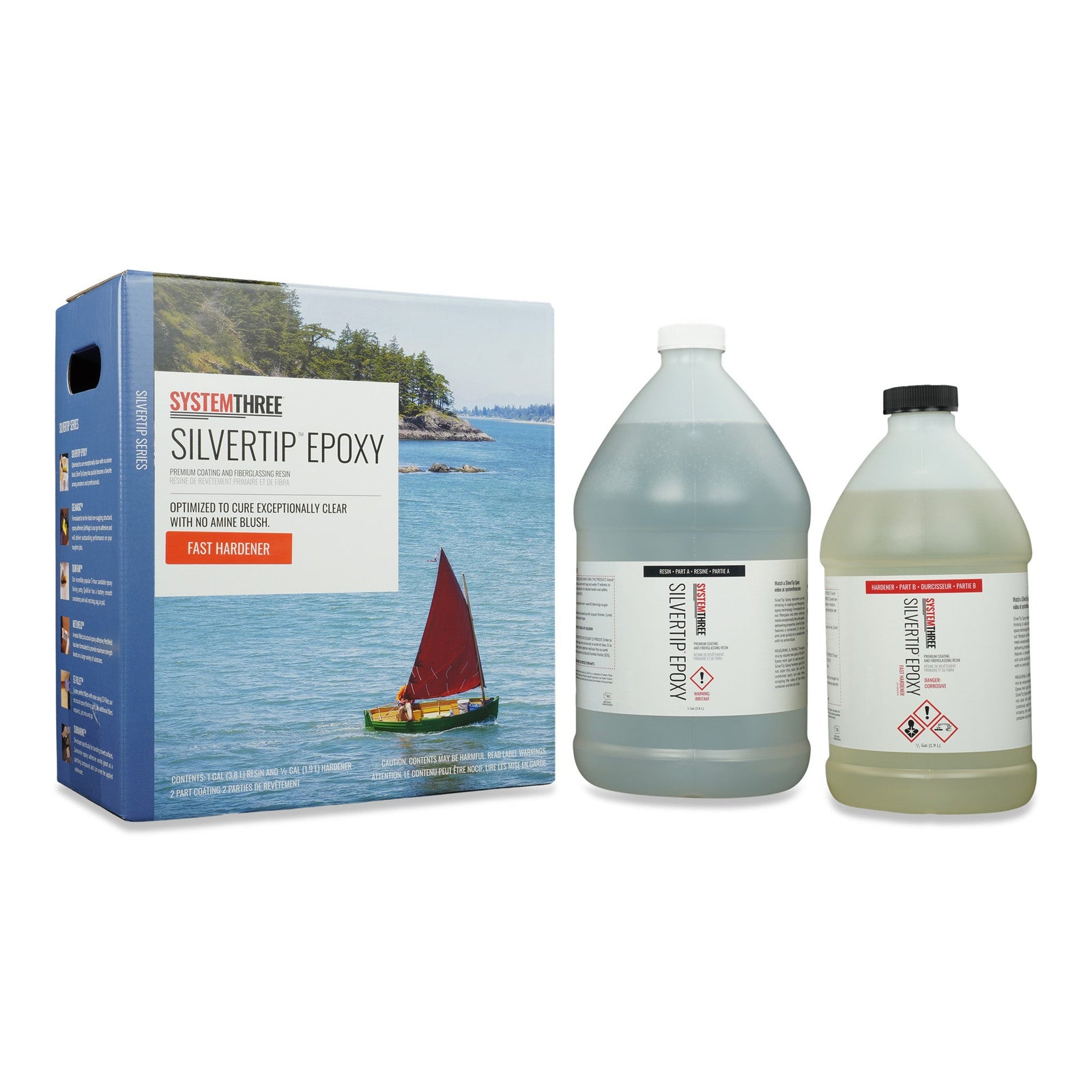
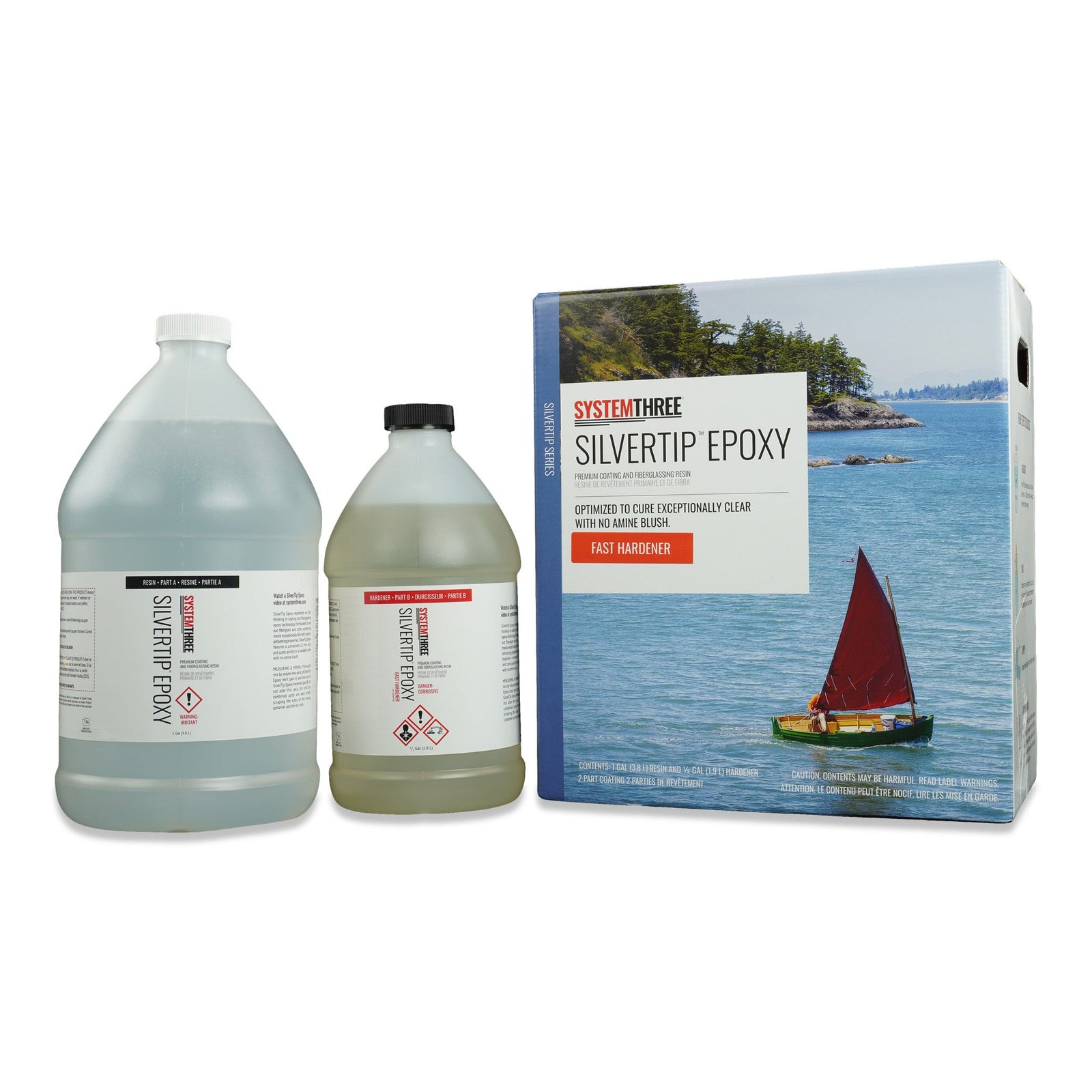
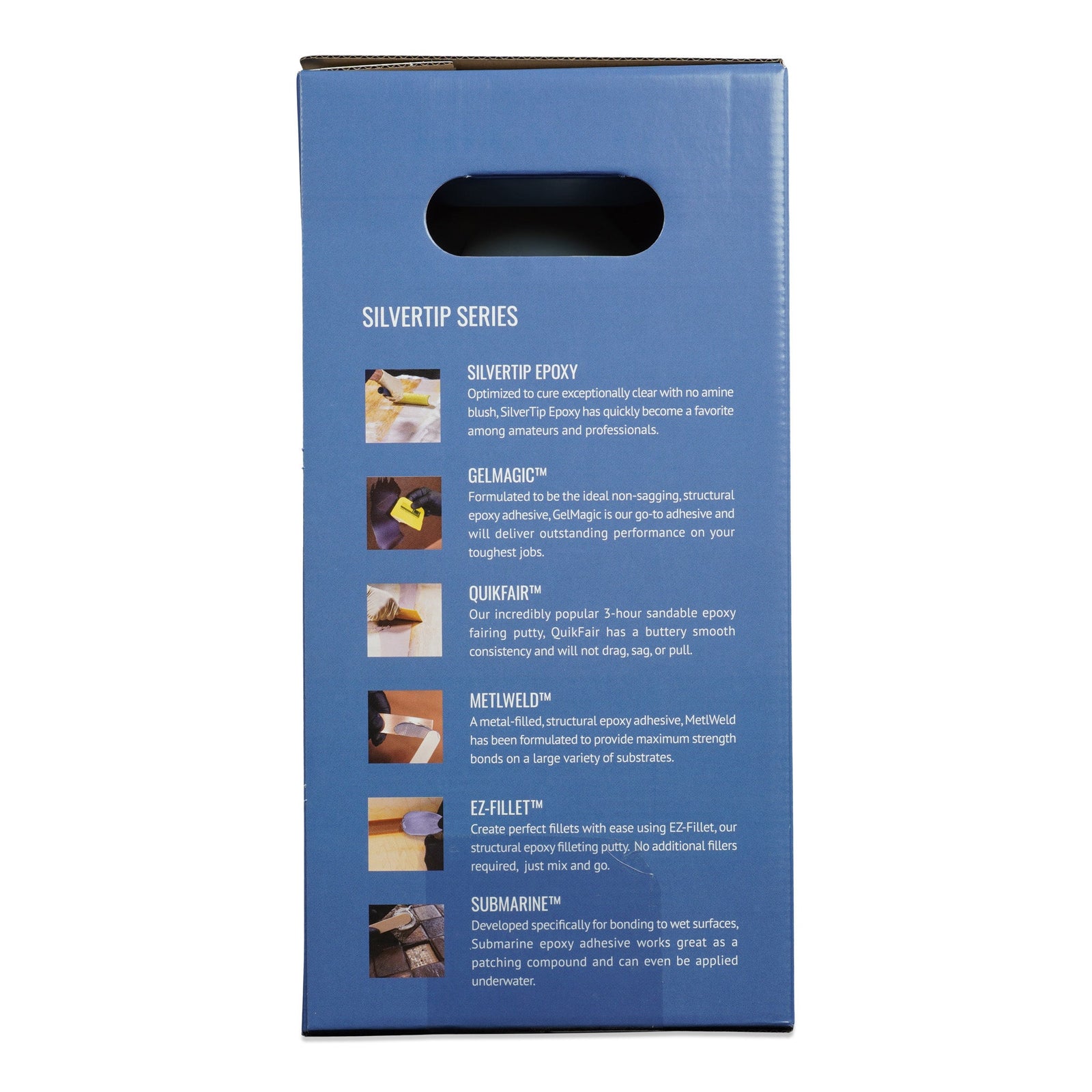
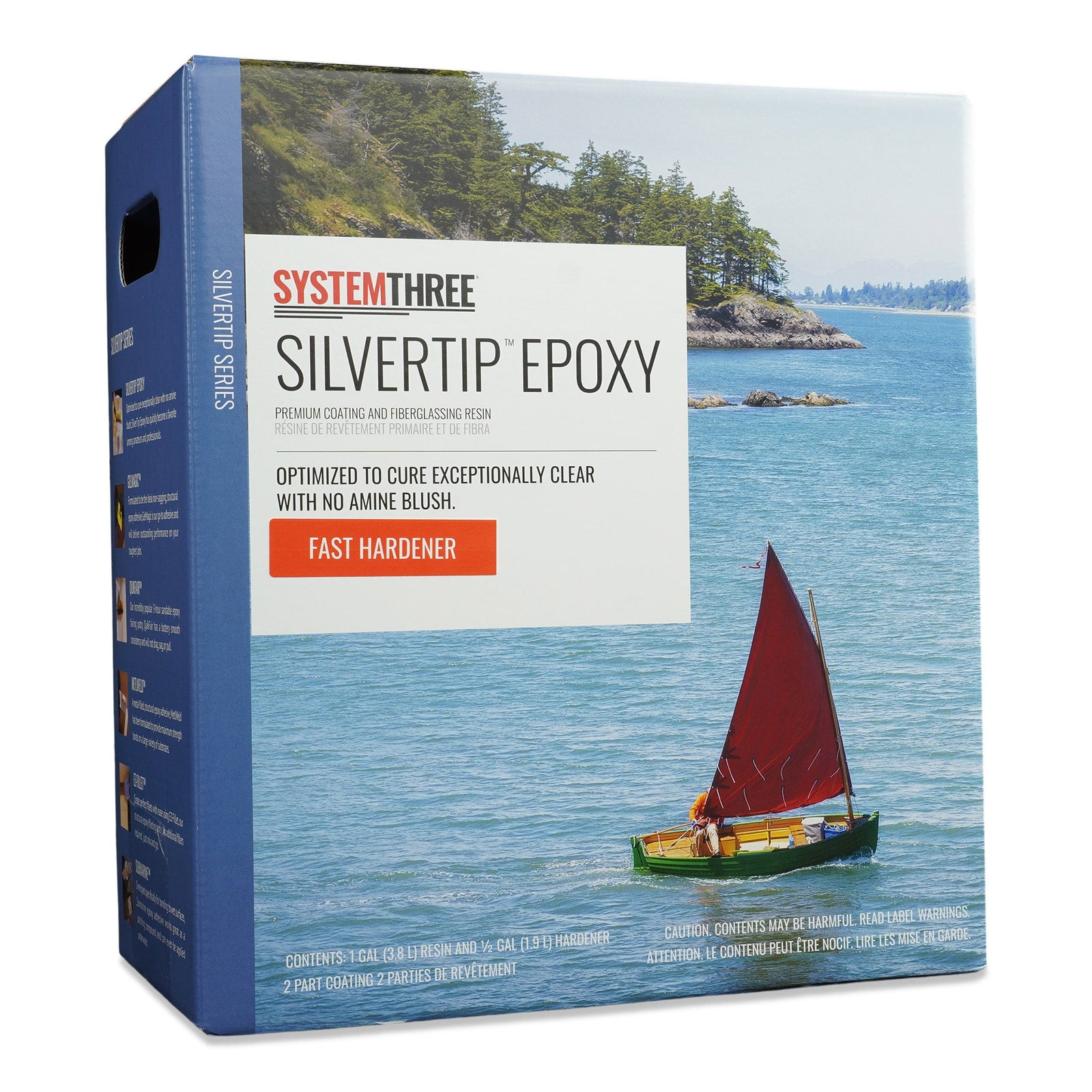
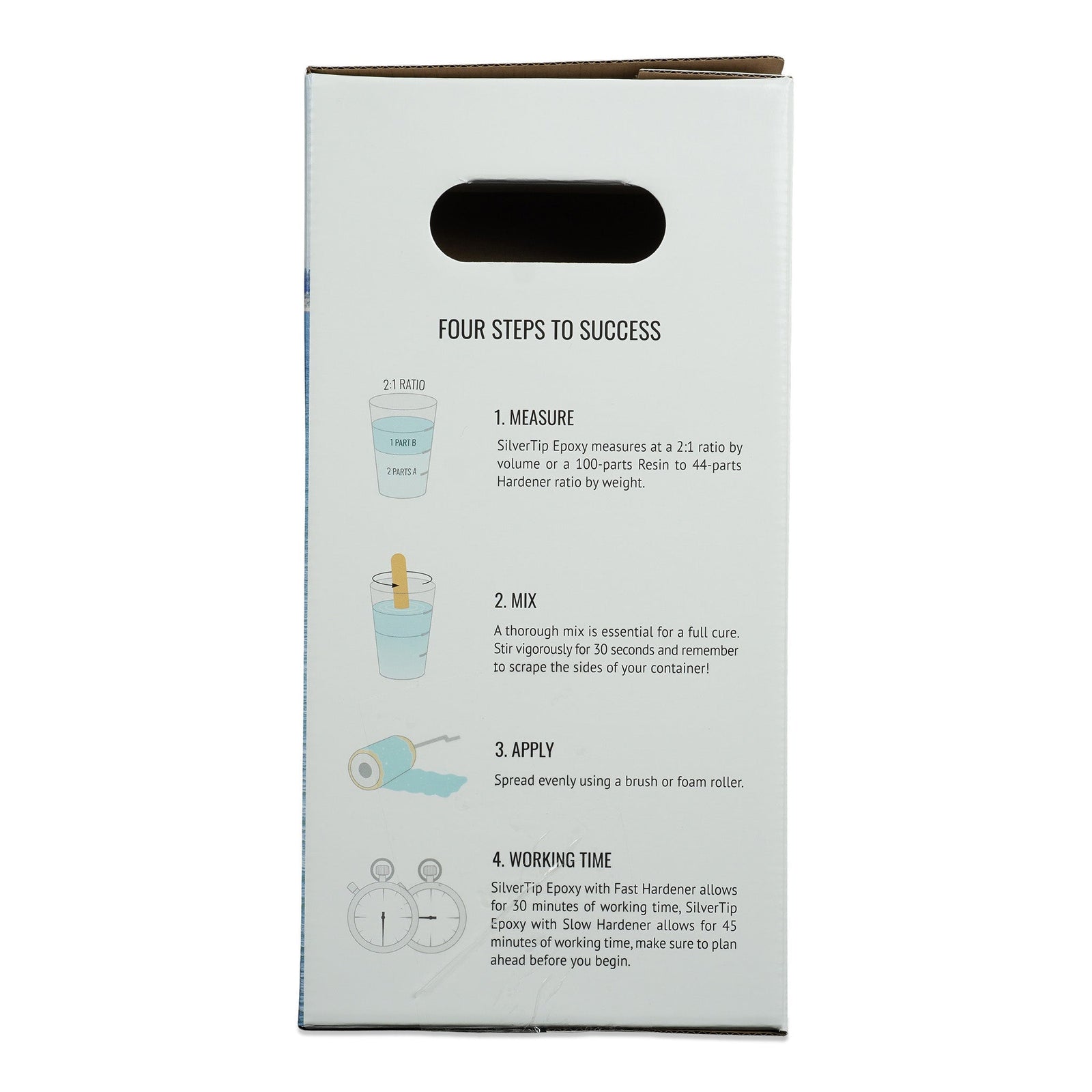
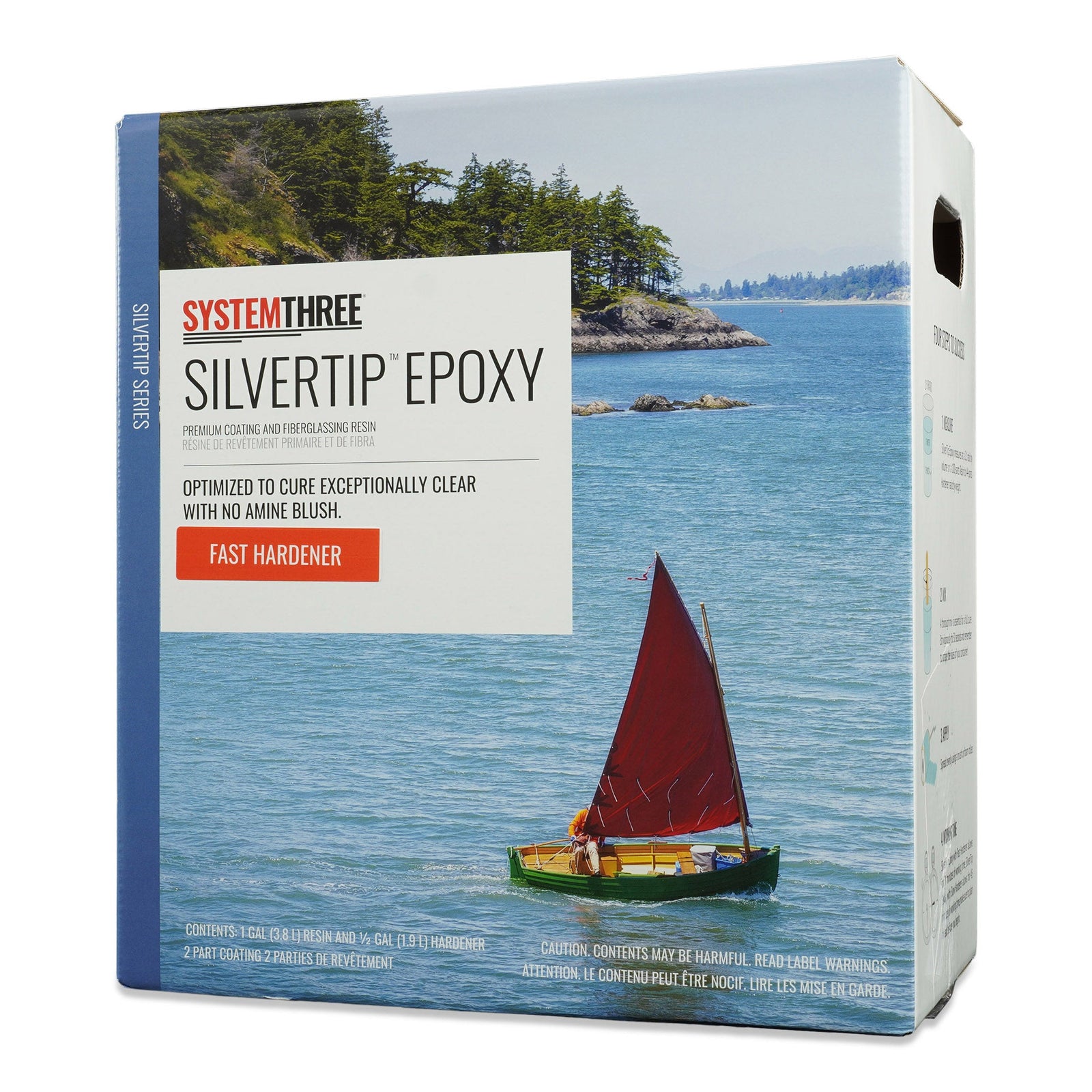
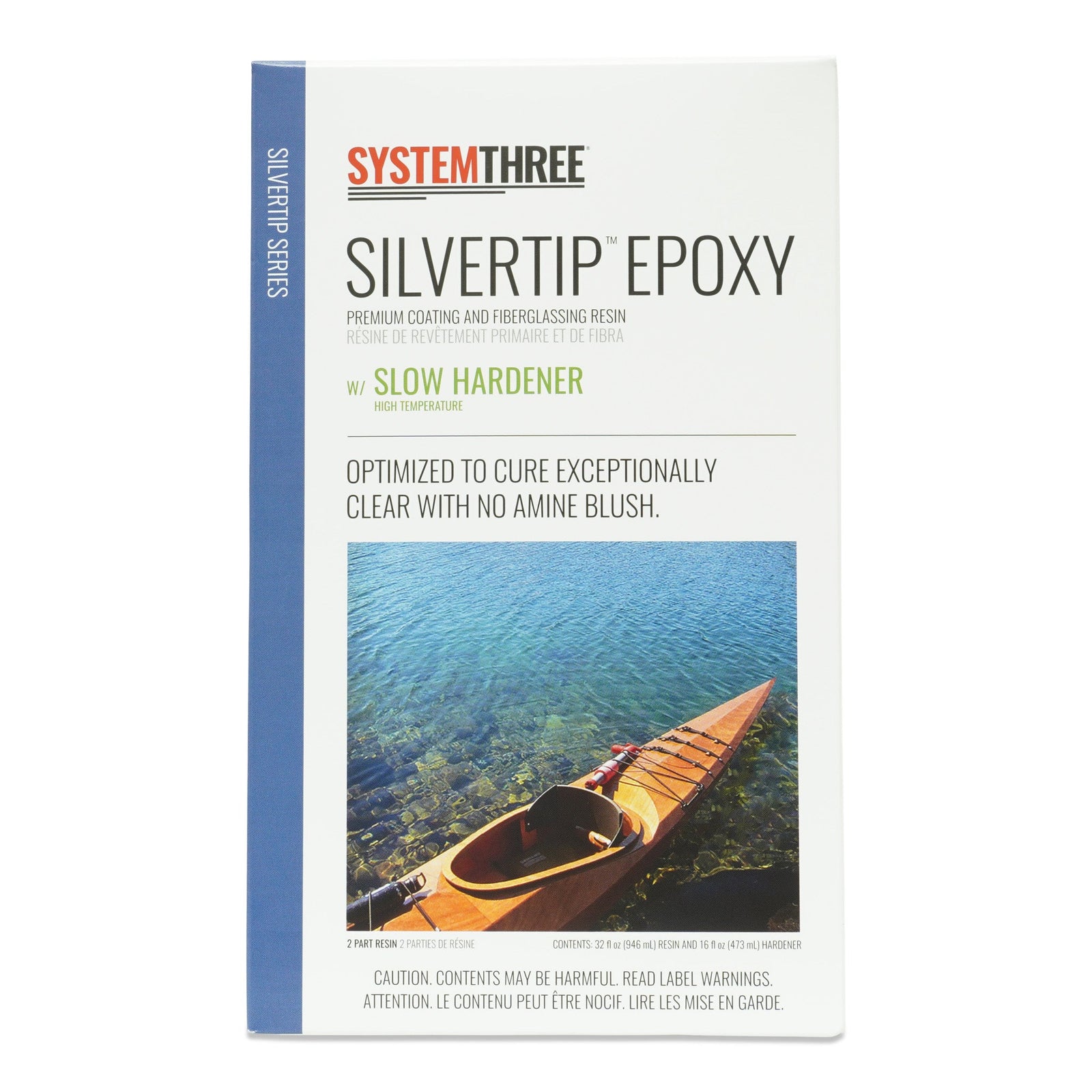
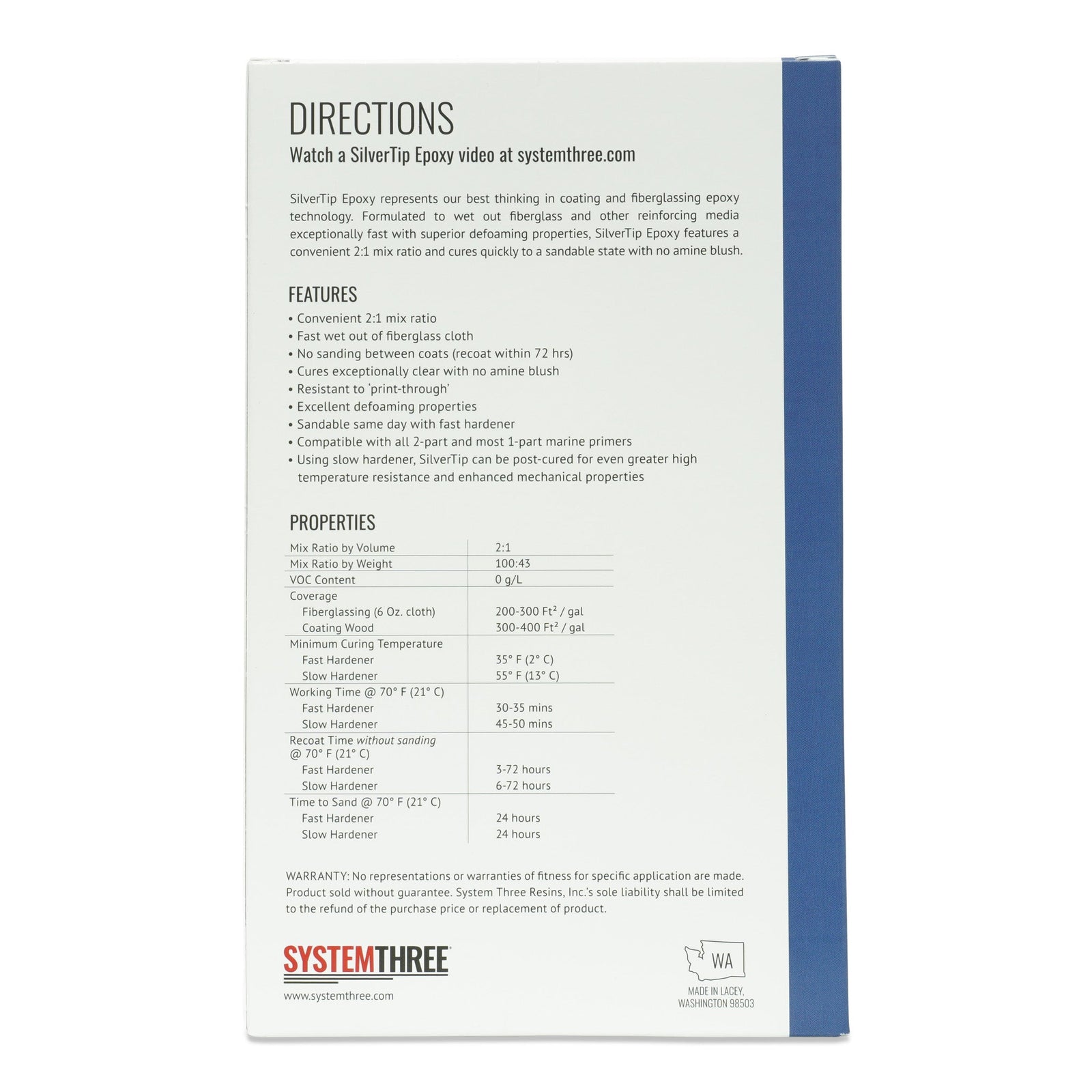
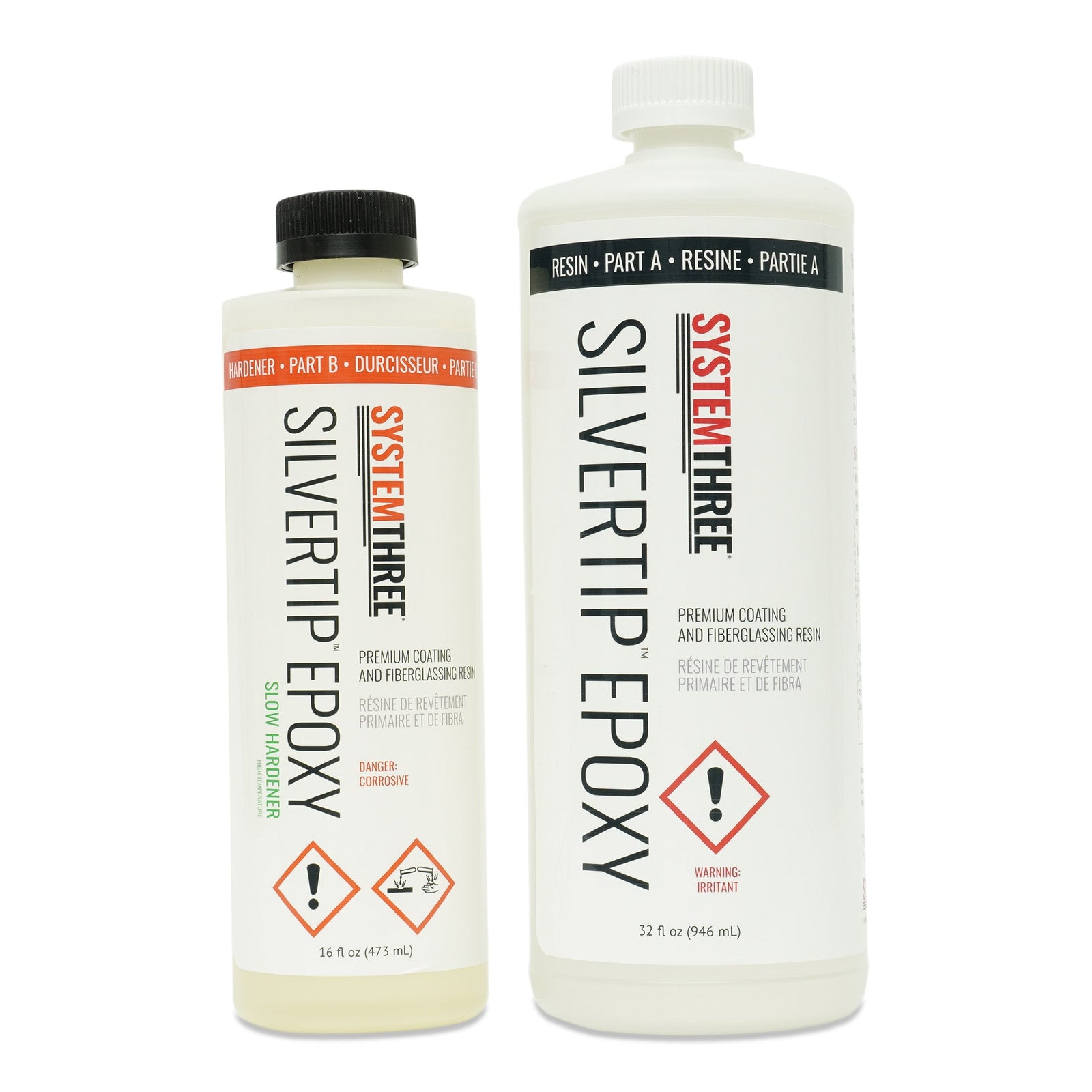
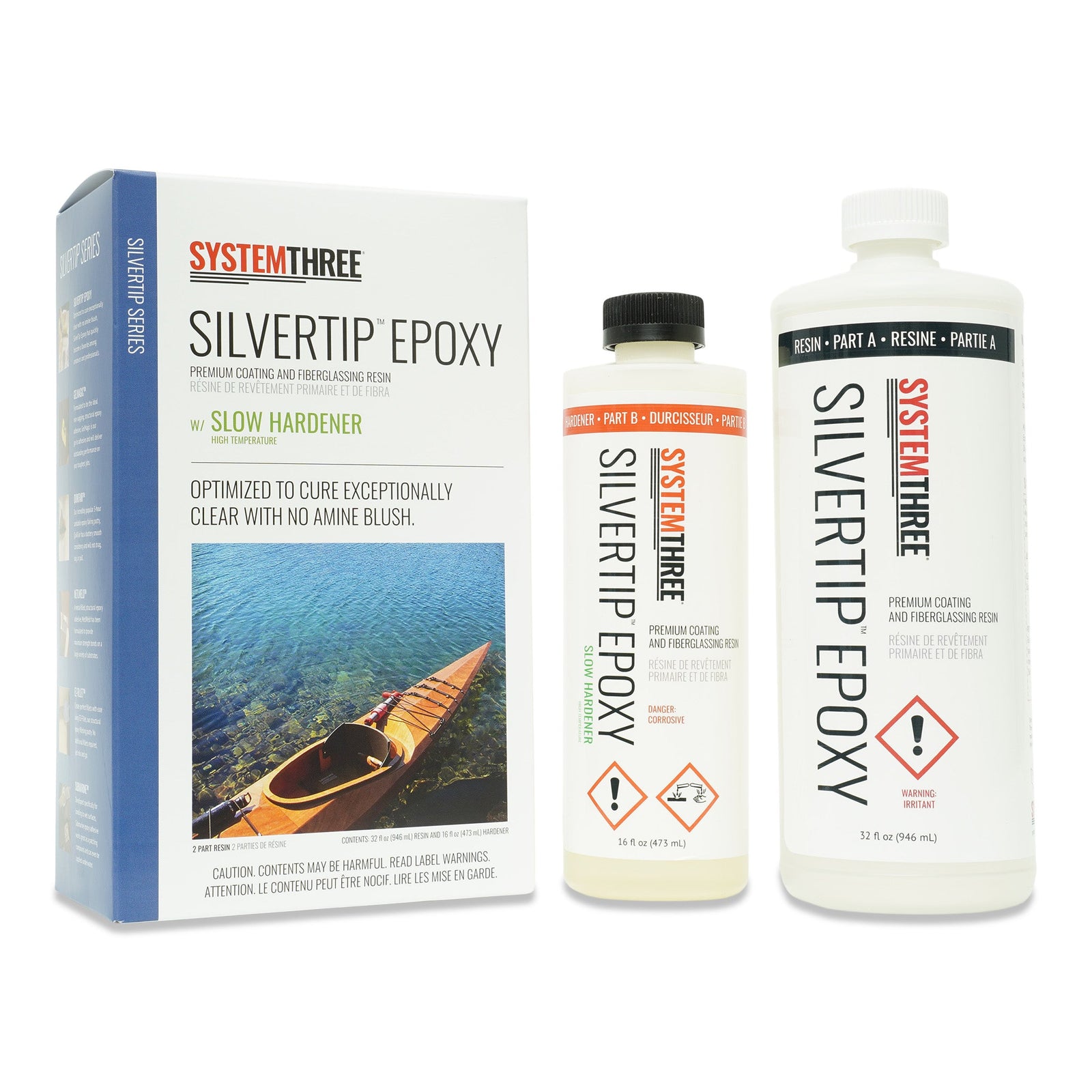
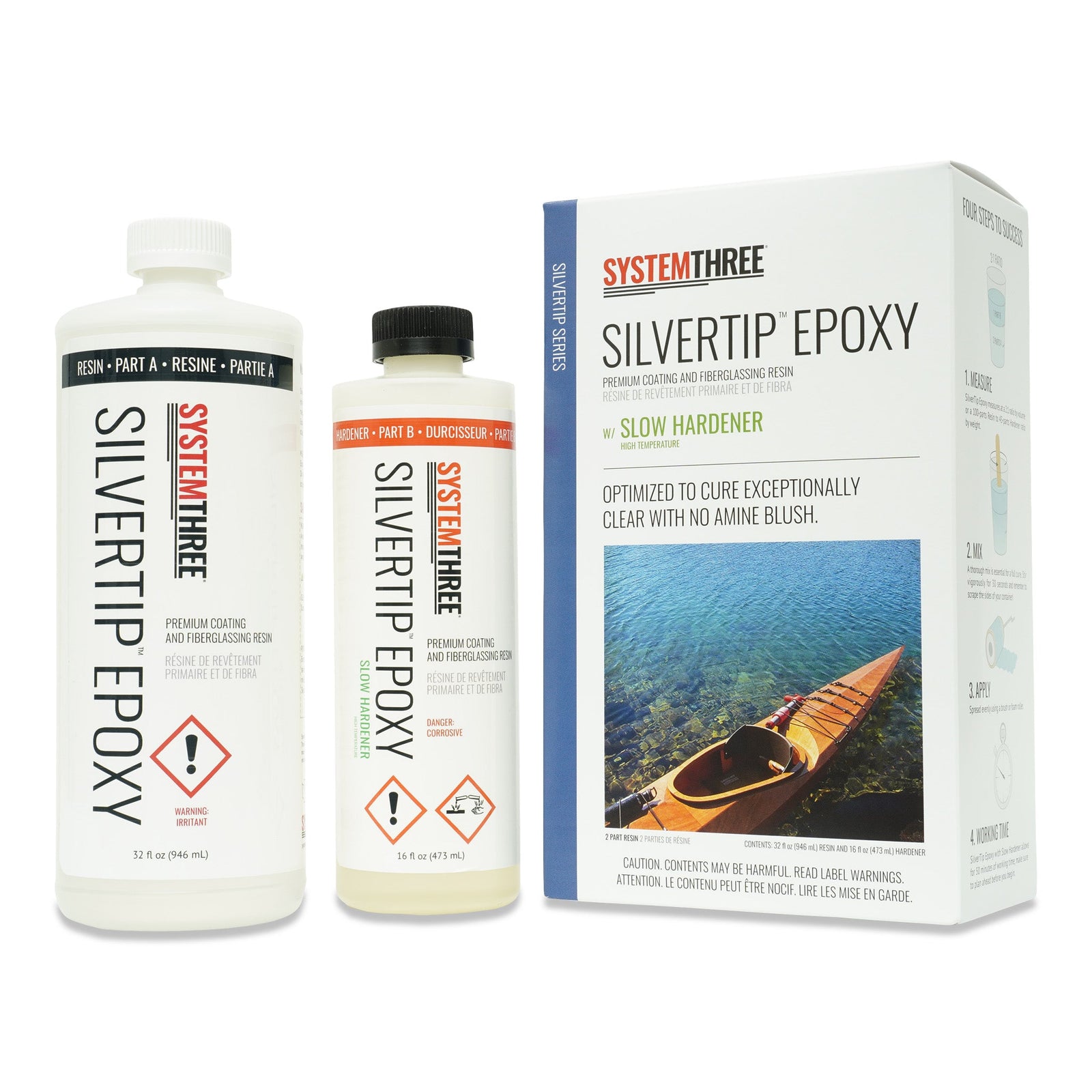
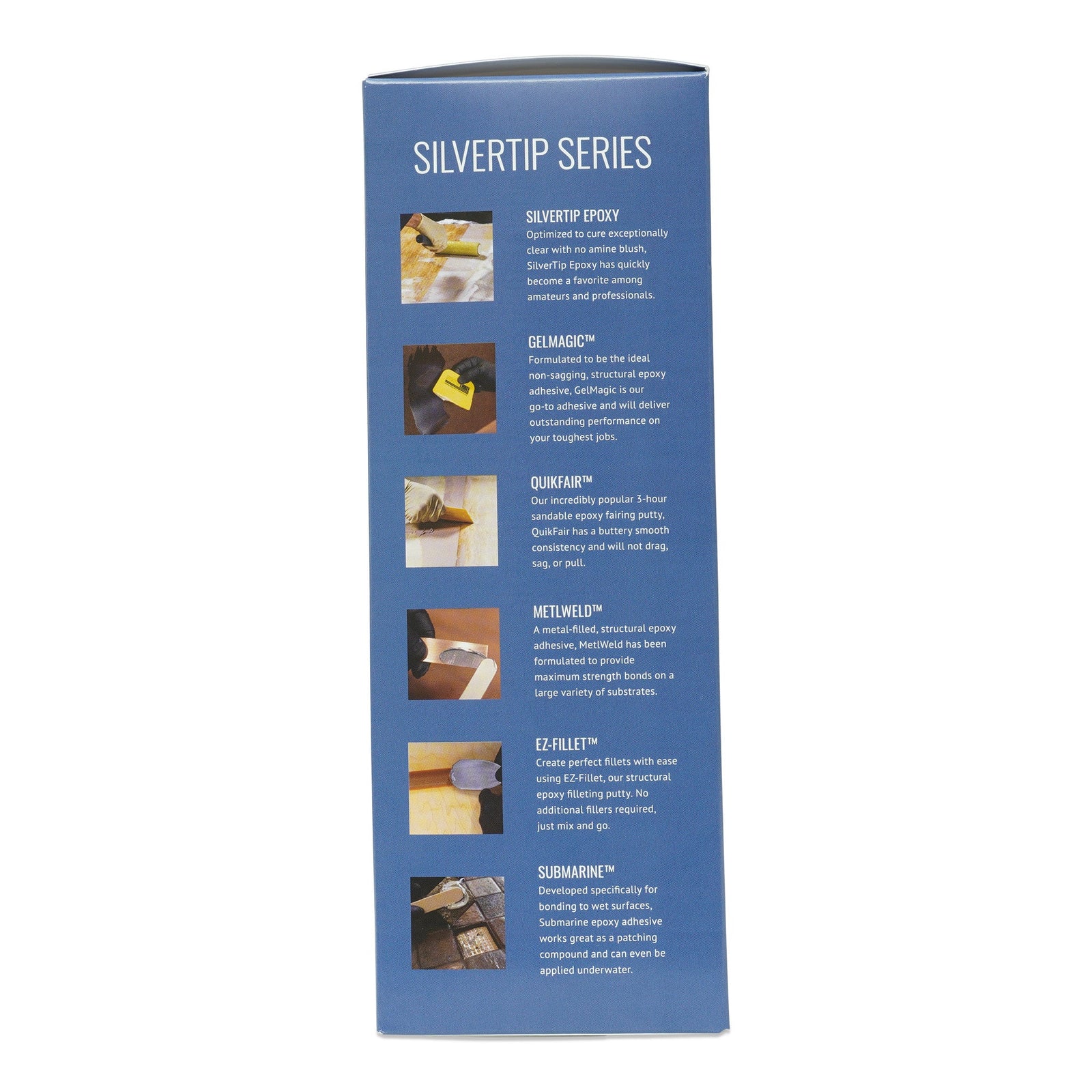
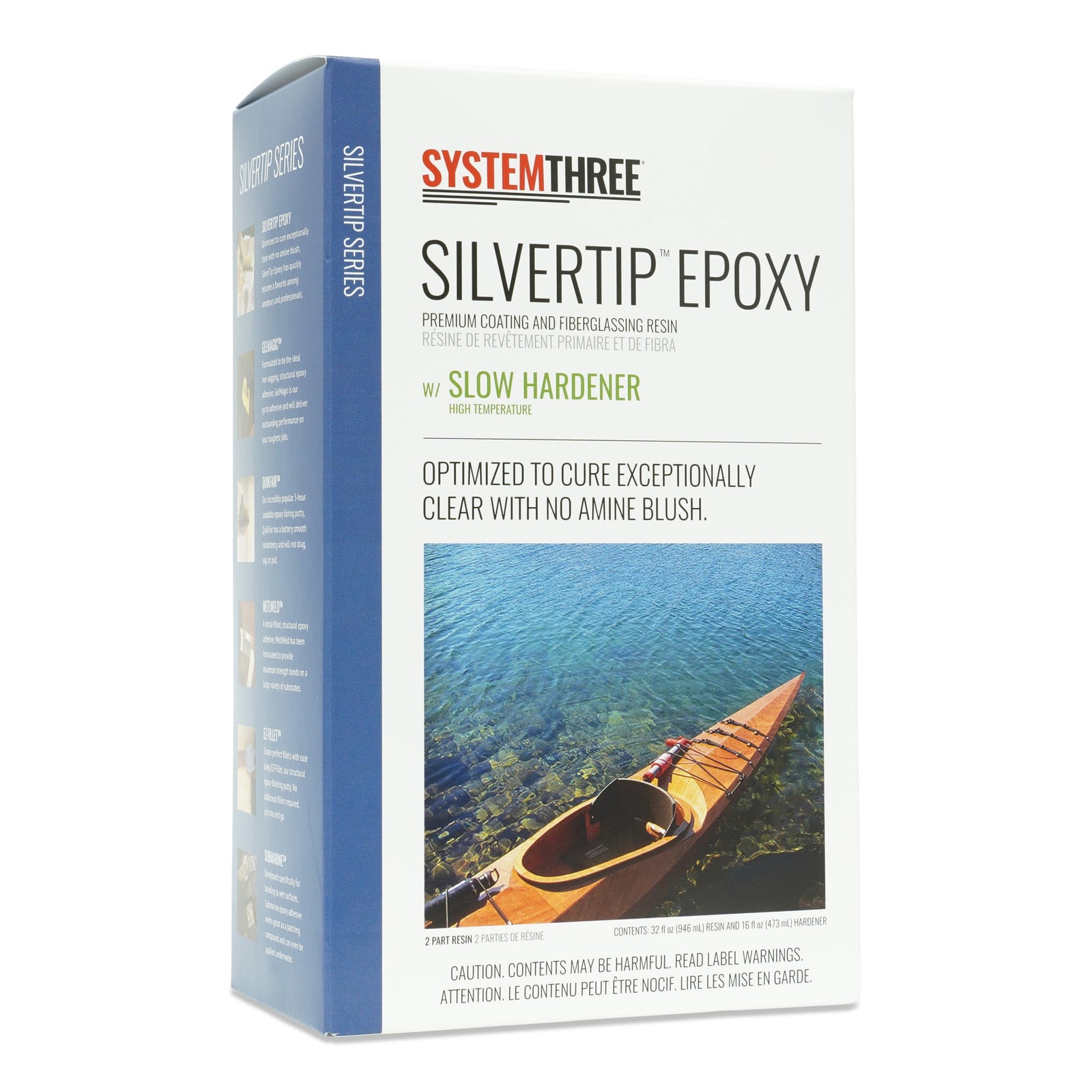
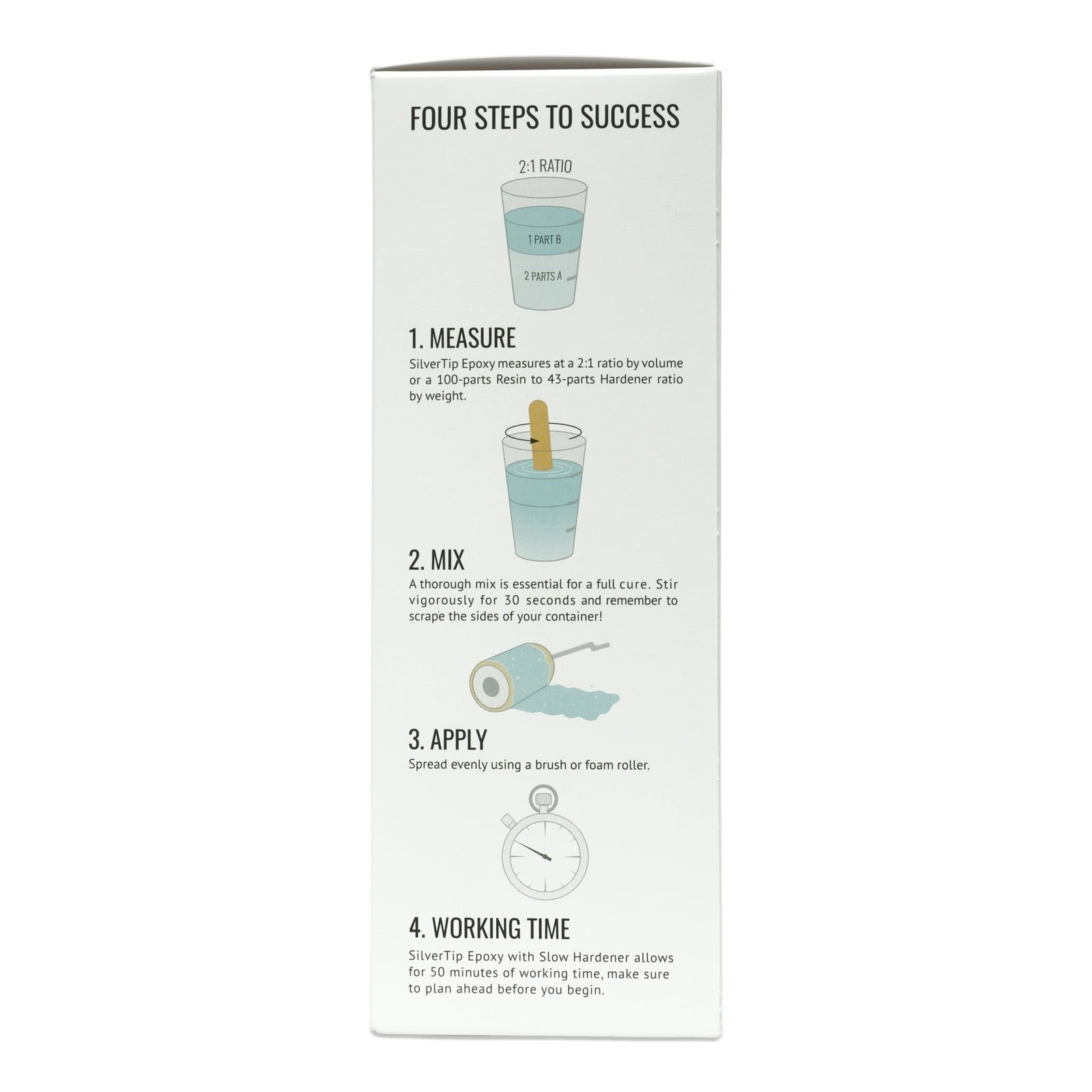
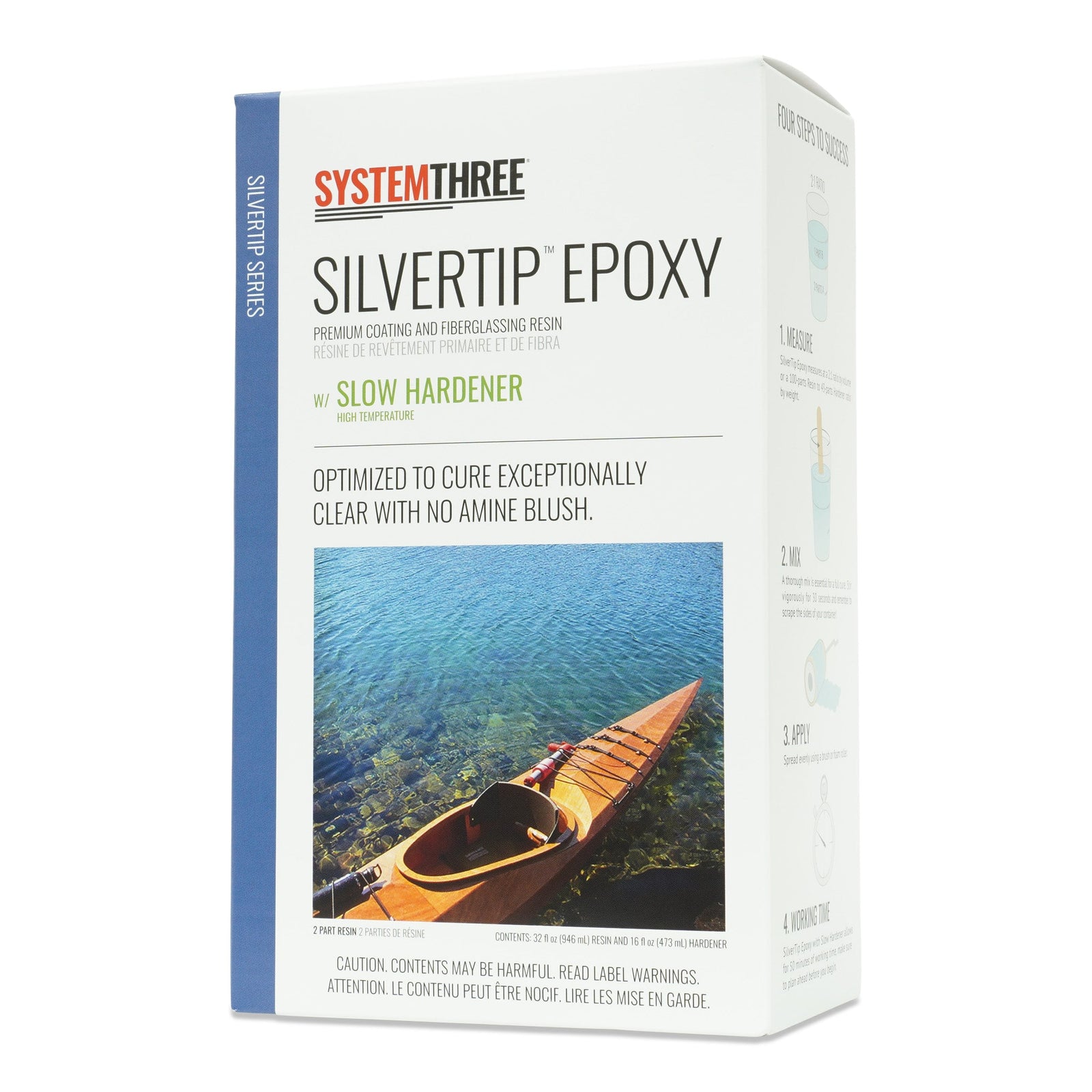
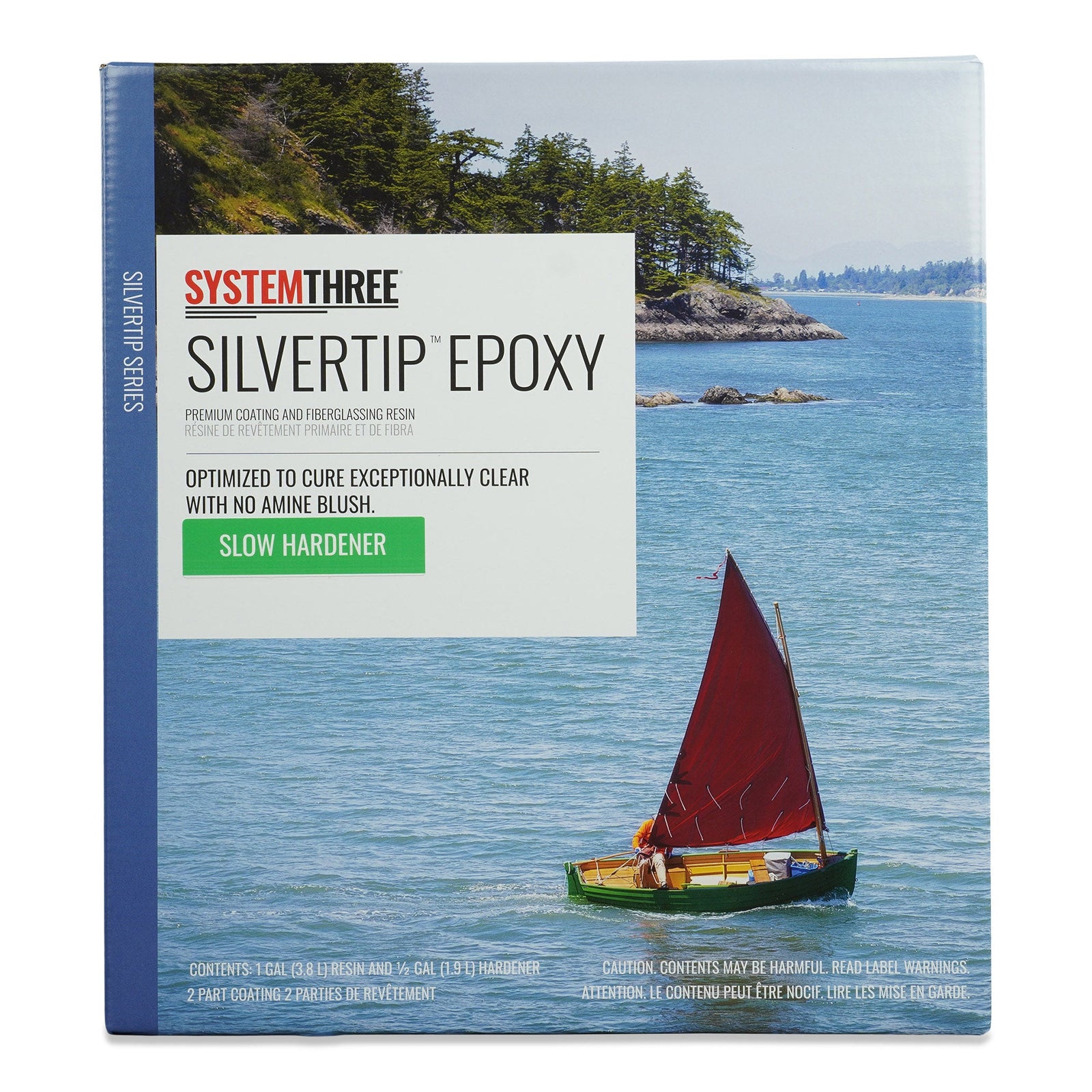
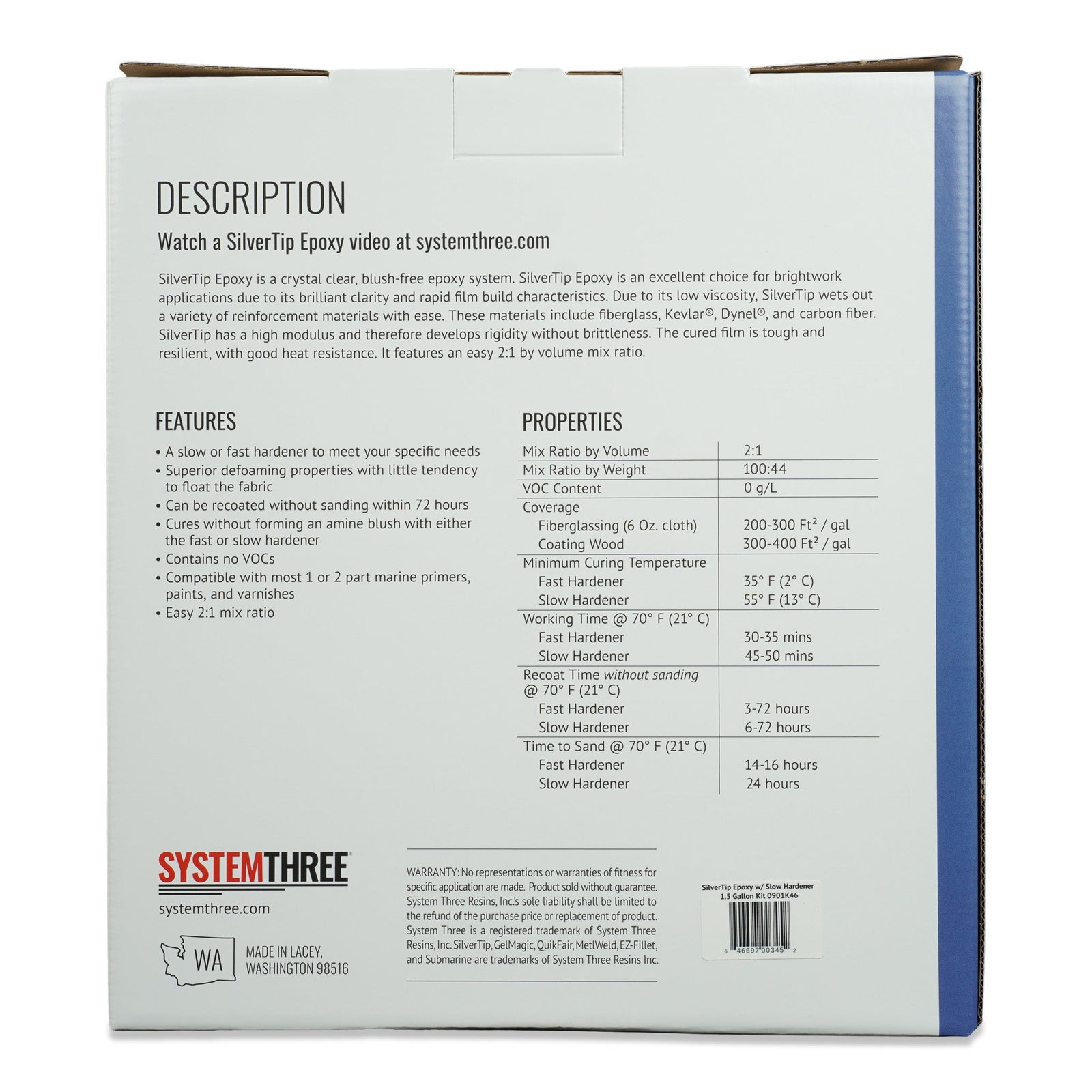
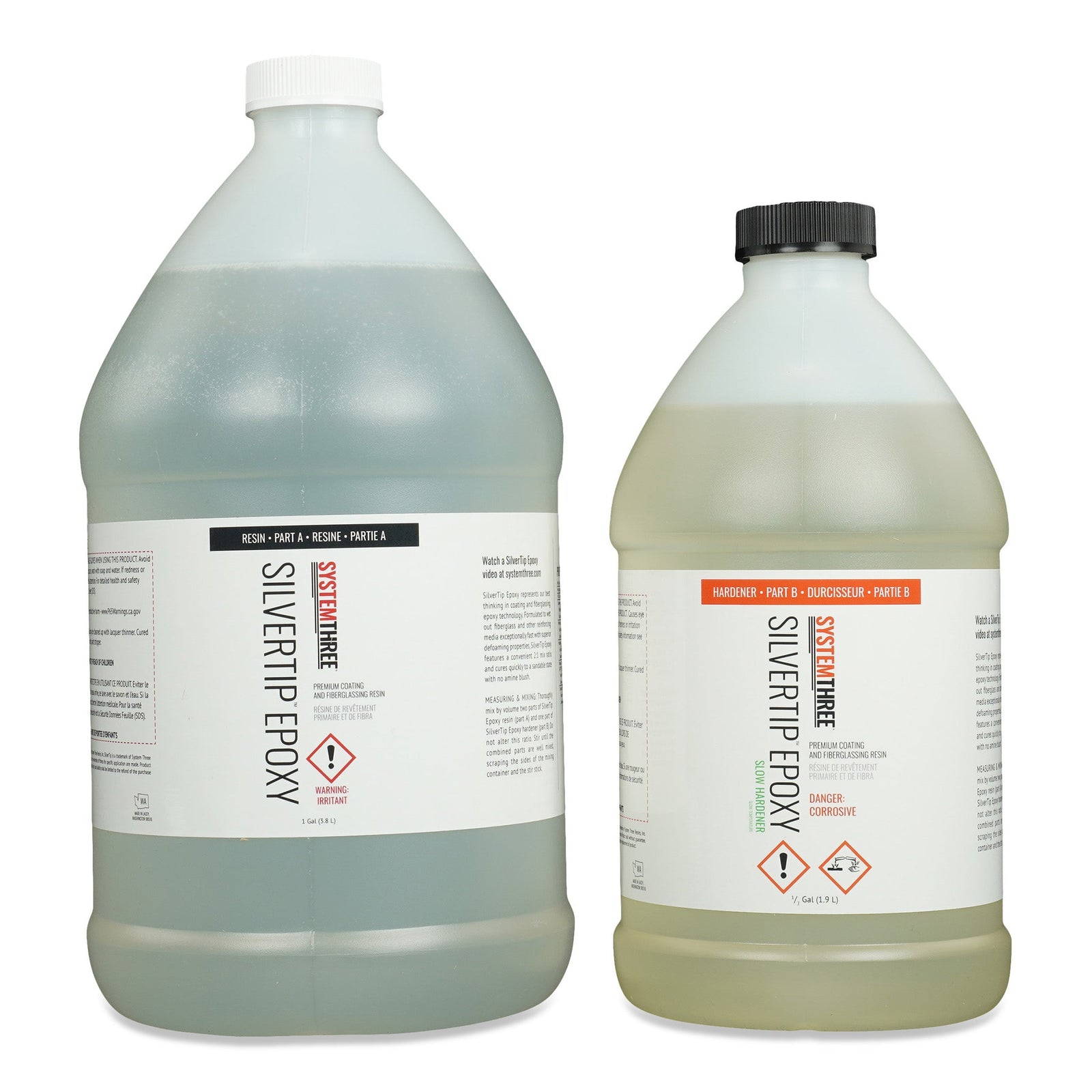
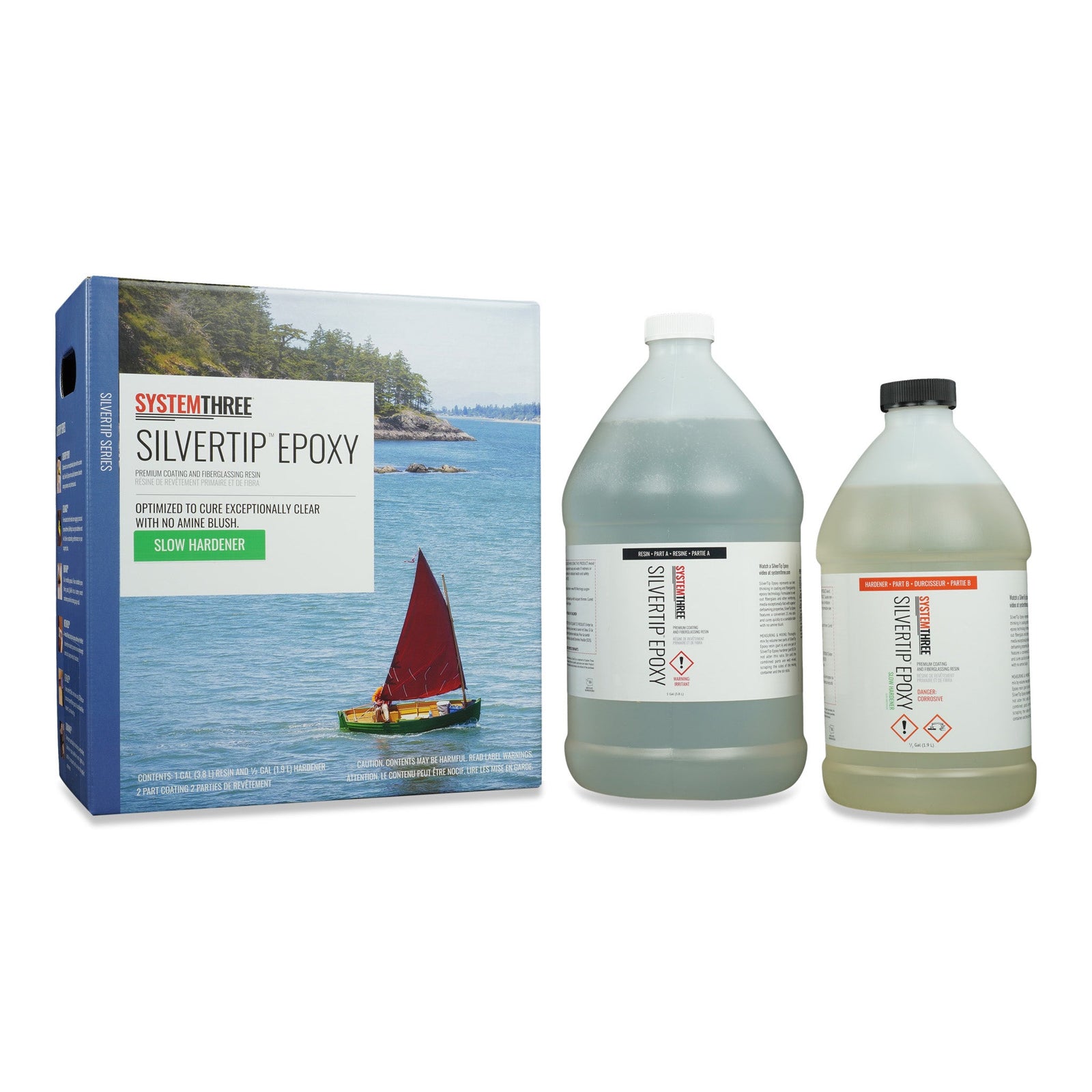
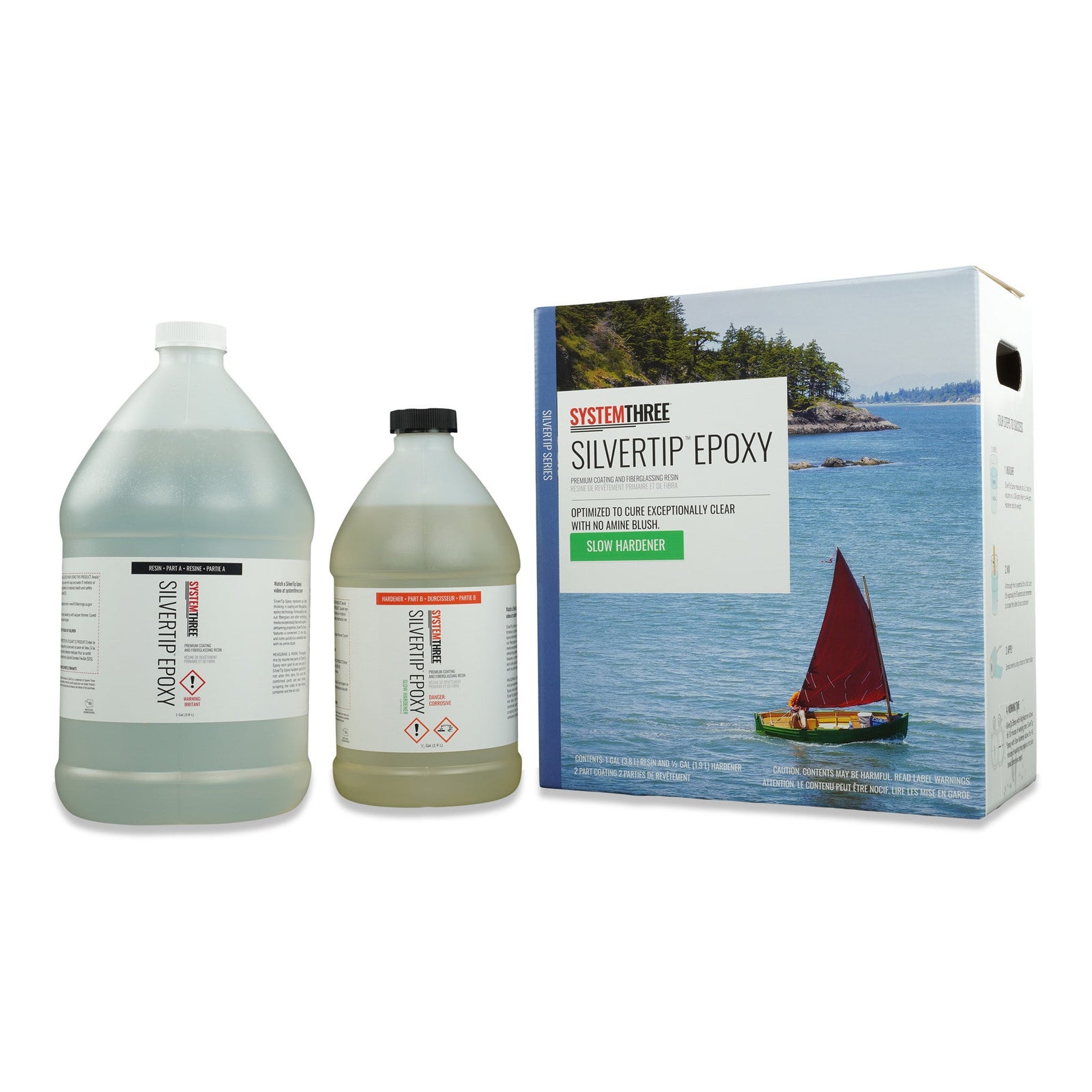
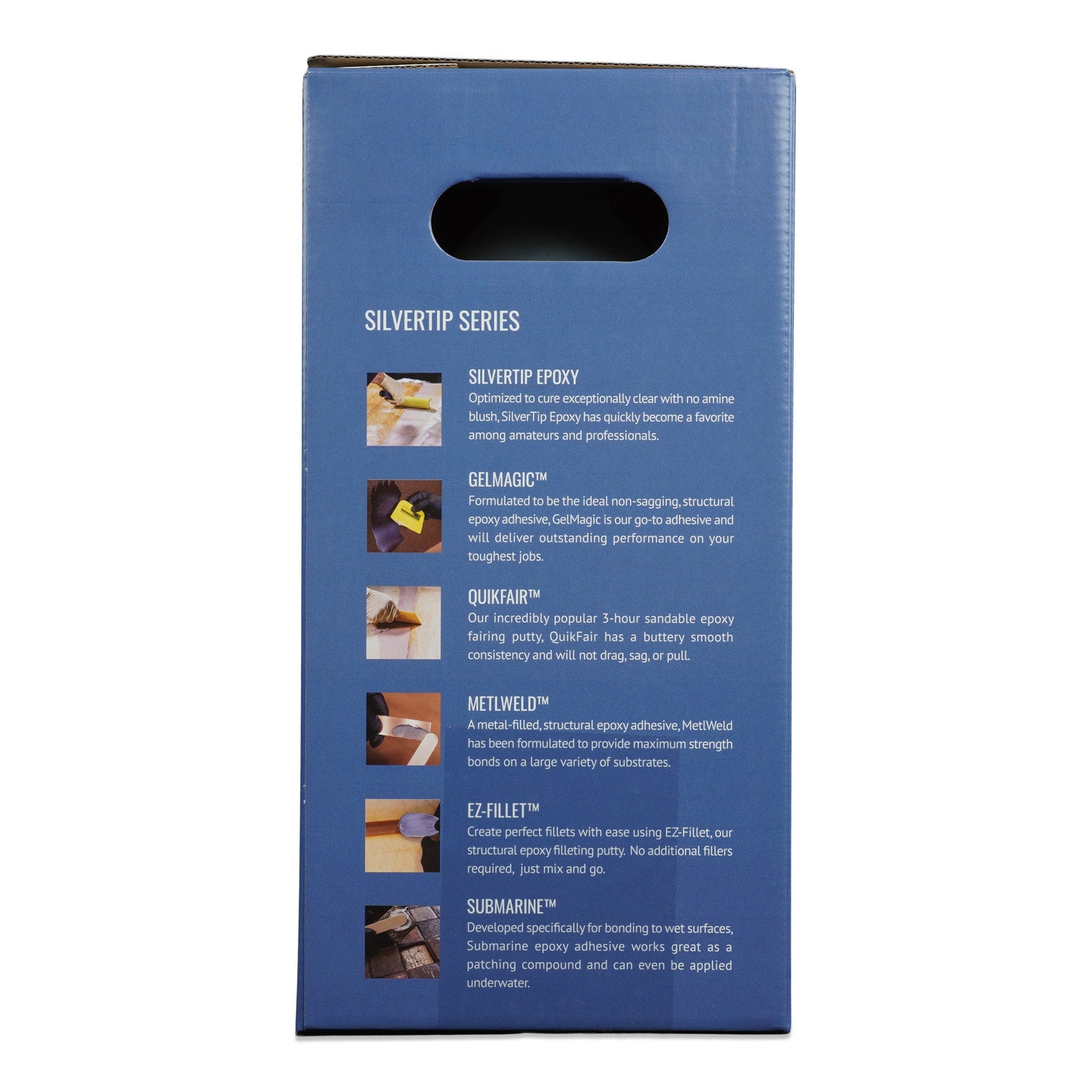
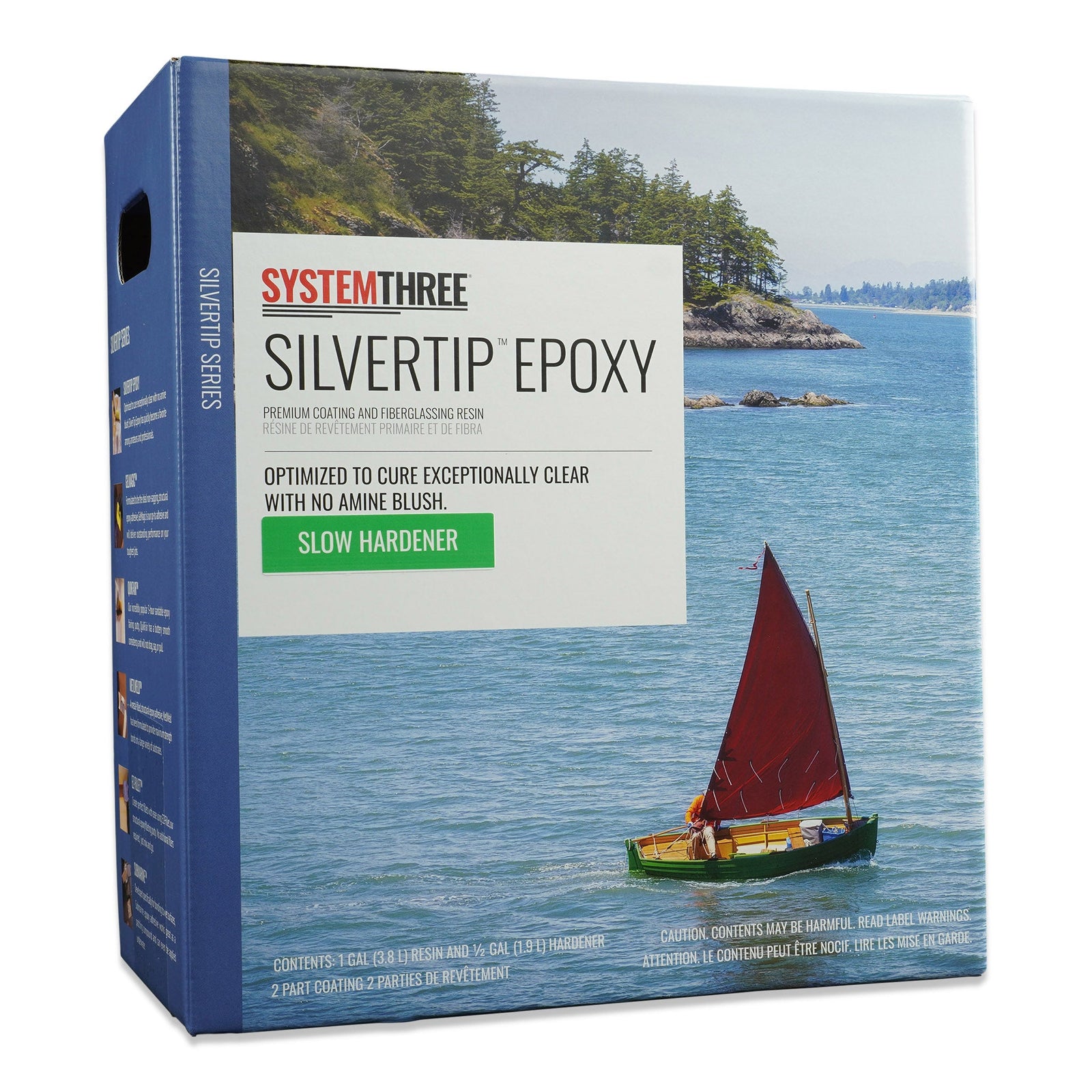
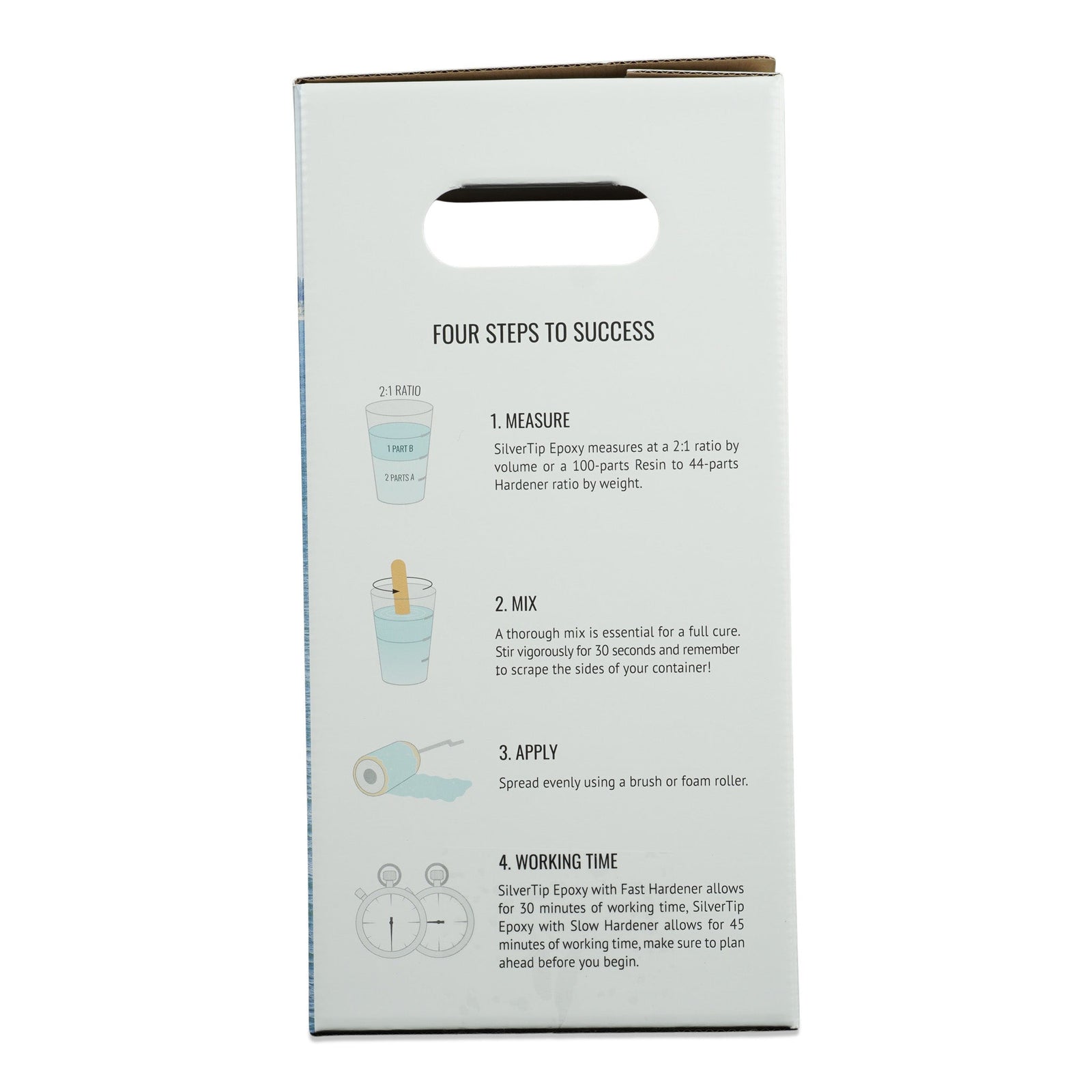
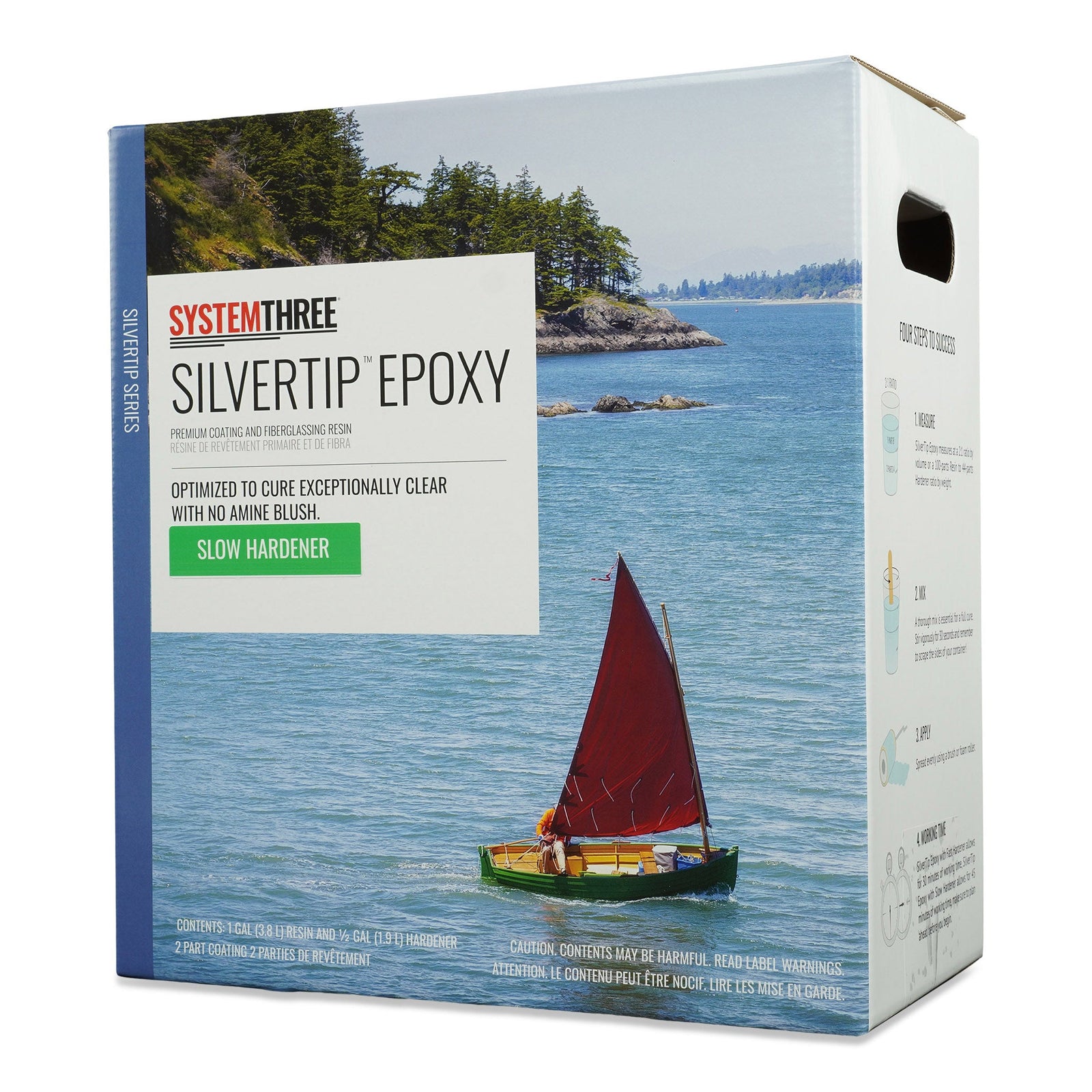
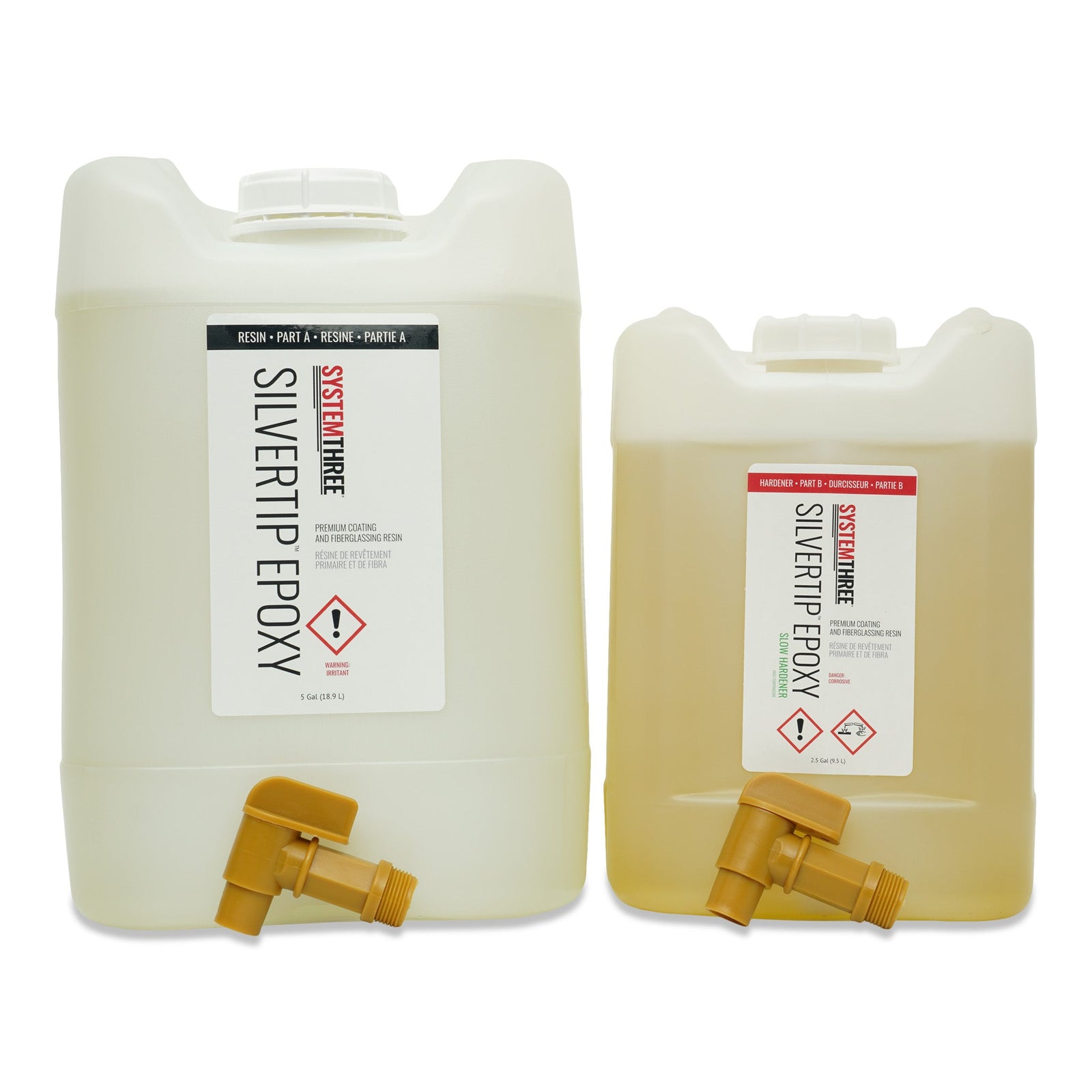
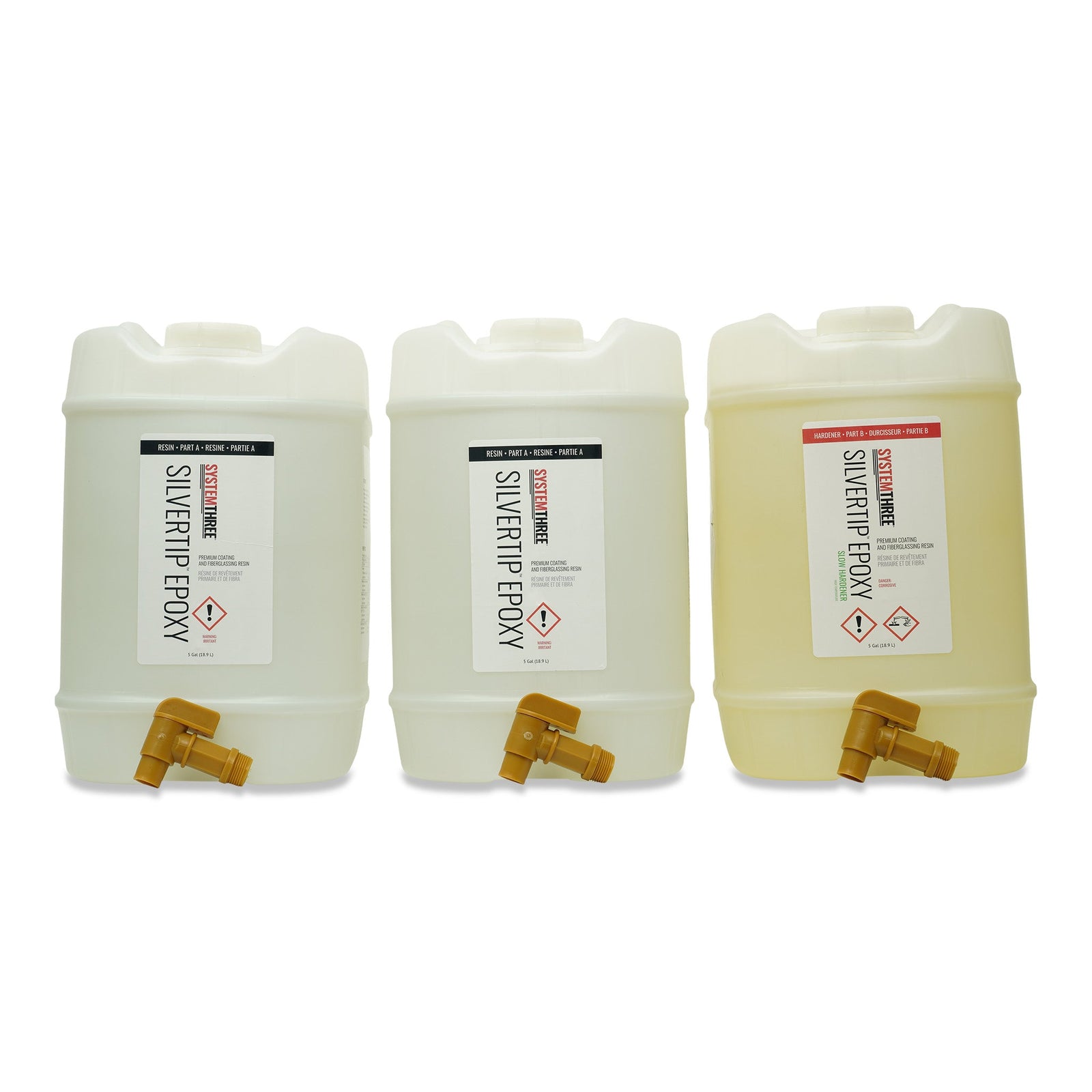
SilverTip Epoxy
SilverTip Epoxy is a crystal clear, blush-free epoxy system. SilverTip Epoxy is an excellent choice for brightwork applications due to its brilliant clarity and rapid film build characteristics.
Due to its low viscosity, SilverTip wets out a variety of reinforcement materials with ease. These materials include fiberglass, Kevlar®, Dynel®, and carbon fiber. SilverTip has a high modulus and therefore develops rigidity without brittleness. The cured film is tough and resilient, with good heat resistance. It features an easy 2:1 by volume mix ratio.
Description
SilverTip Epoxy
Features
Properties

Recoat Time
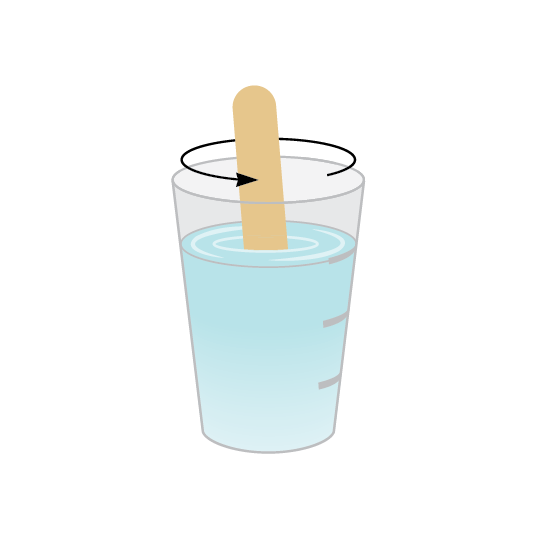
Mix Ratio

Minimum Application Temperature

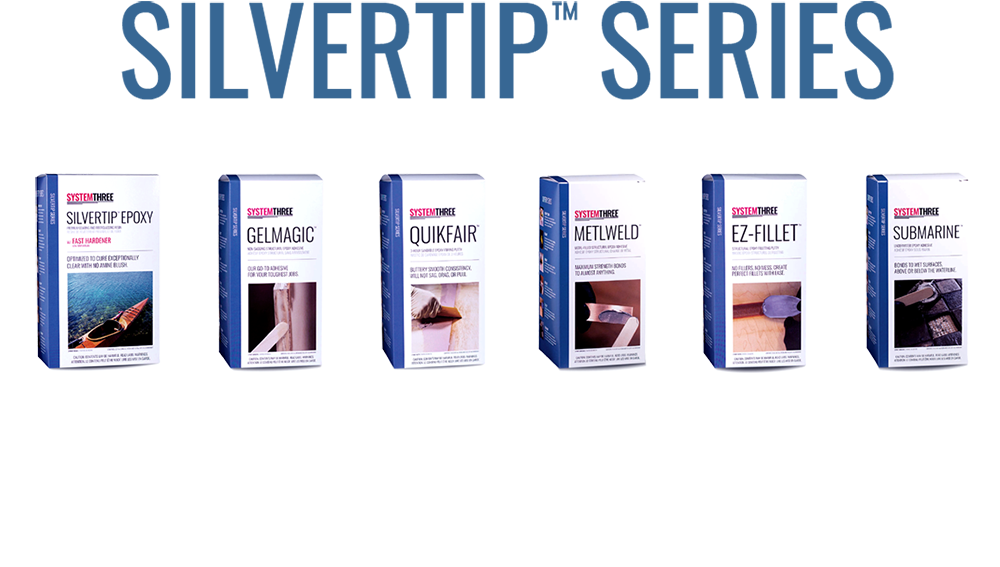
What is the SilverTip Series?
General Purpose Epoxy was our first product when System Three launched in 1979 and remains one of our bestselling, most loved products. At the time, it redefined the category by offering consumers an epoxy system that could be used in a wide variety of environments.
We revisited that playbook with the introduction of our SilverTip Series. In an effort to make epoxies even more accessible, we have "eliminated the guesswork" by formulating application-specific epoxy products to address every common marine project. With the most user-friendly epoxy products on the market, the SilverTip Series, we're making boatbuilding easier and more fun.
The SilverTip Series Products
Engineered for Any Project
The SilverTip Series has been formulated to address every epoxy need you might encounter in building your next wooden boat. We are here to eliminate the guesswork and help you Epoxy Like a Pro.
Start from scratch... or start with scratches. Boatbuilding launched System Three in 1979 and since then we have encountered and discussed every marine scenario under the sun with our customers.
We can't wait to help with your next big project.
Frequently Asked questions


























































